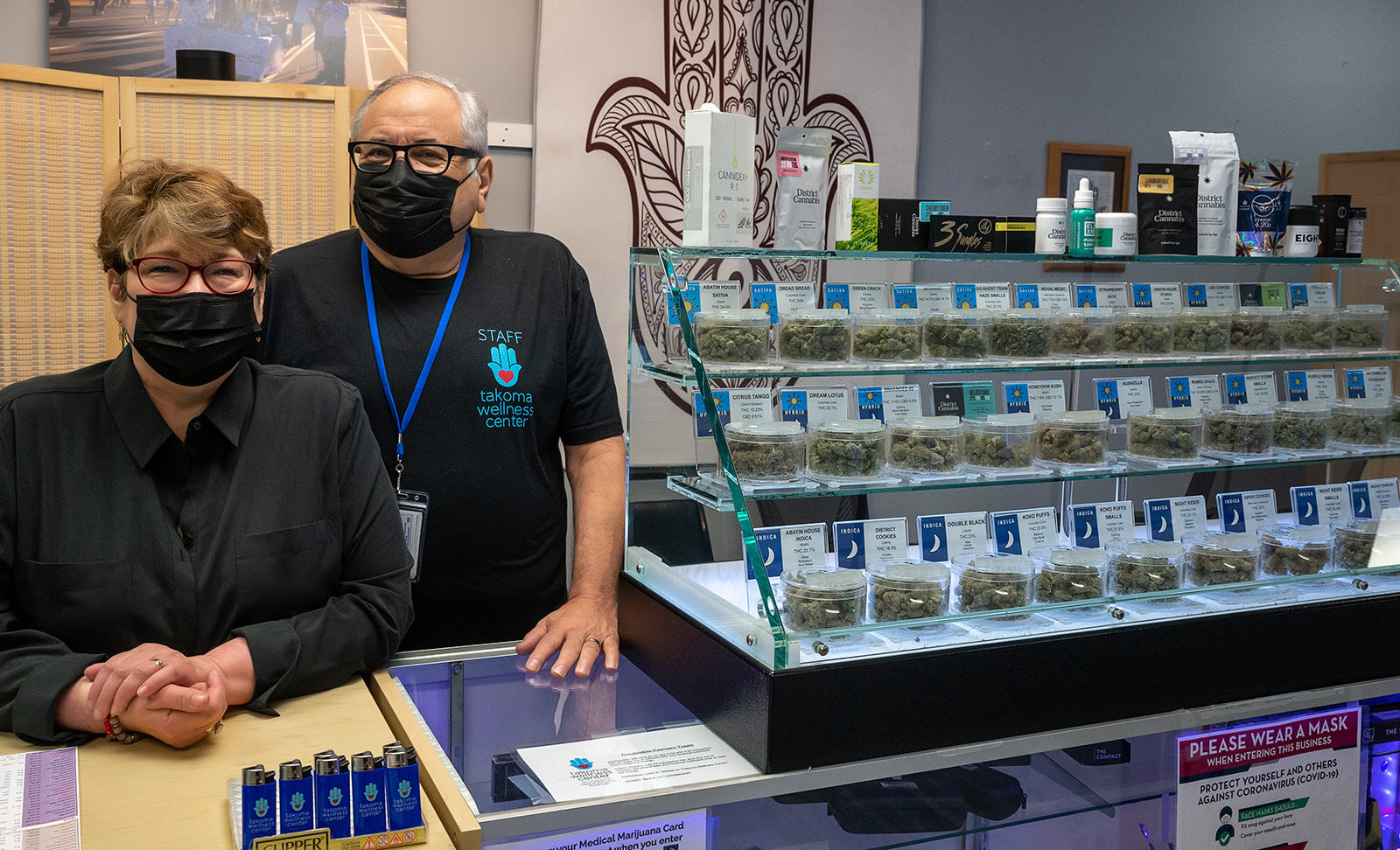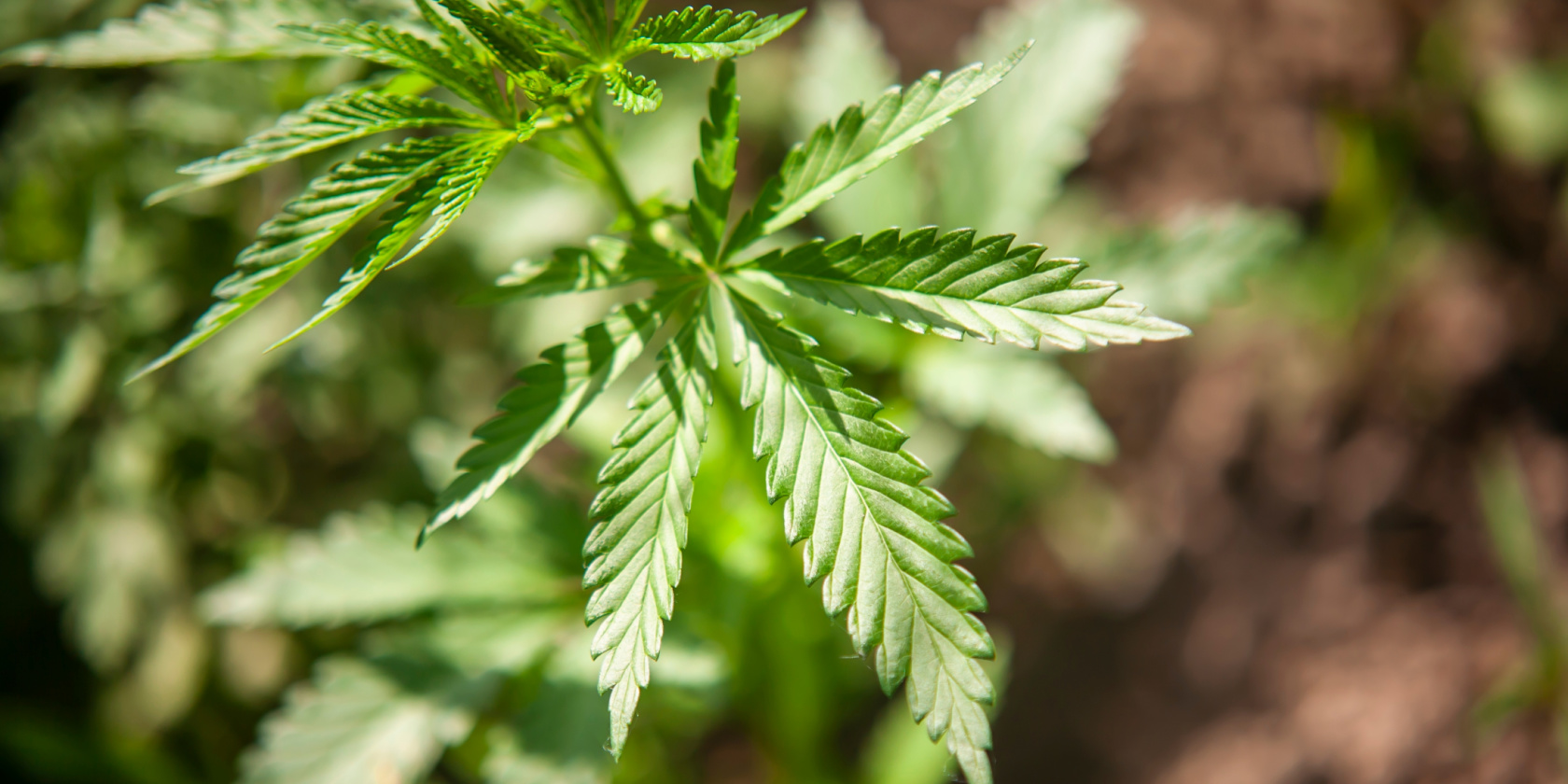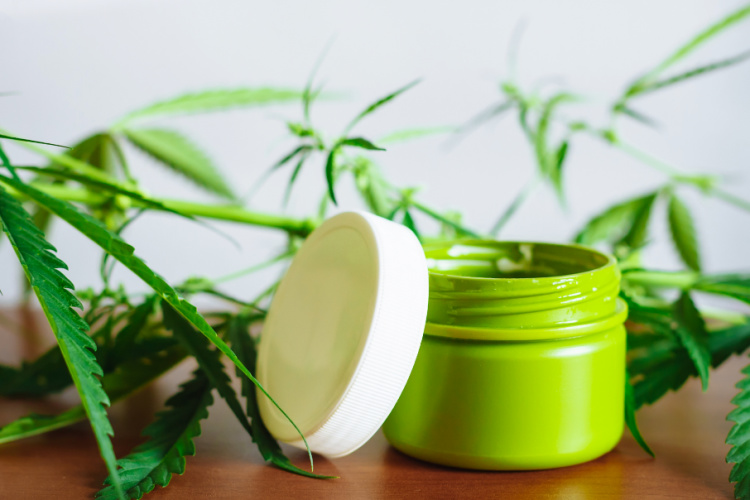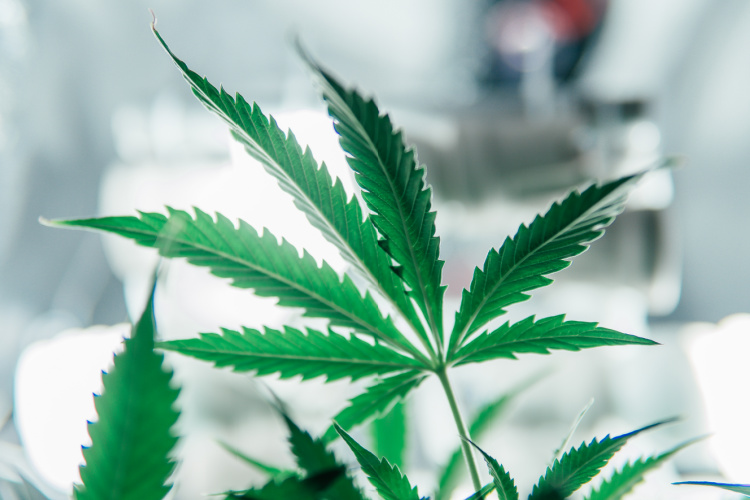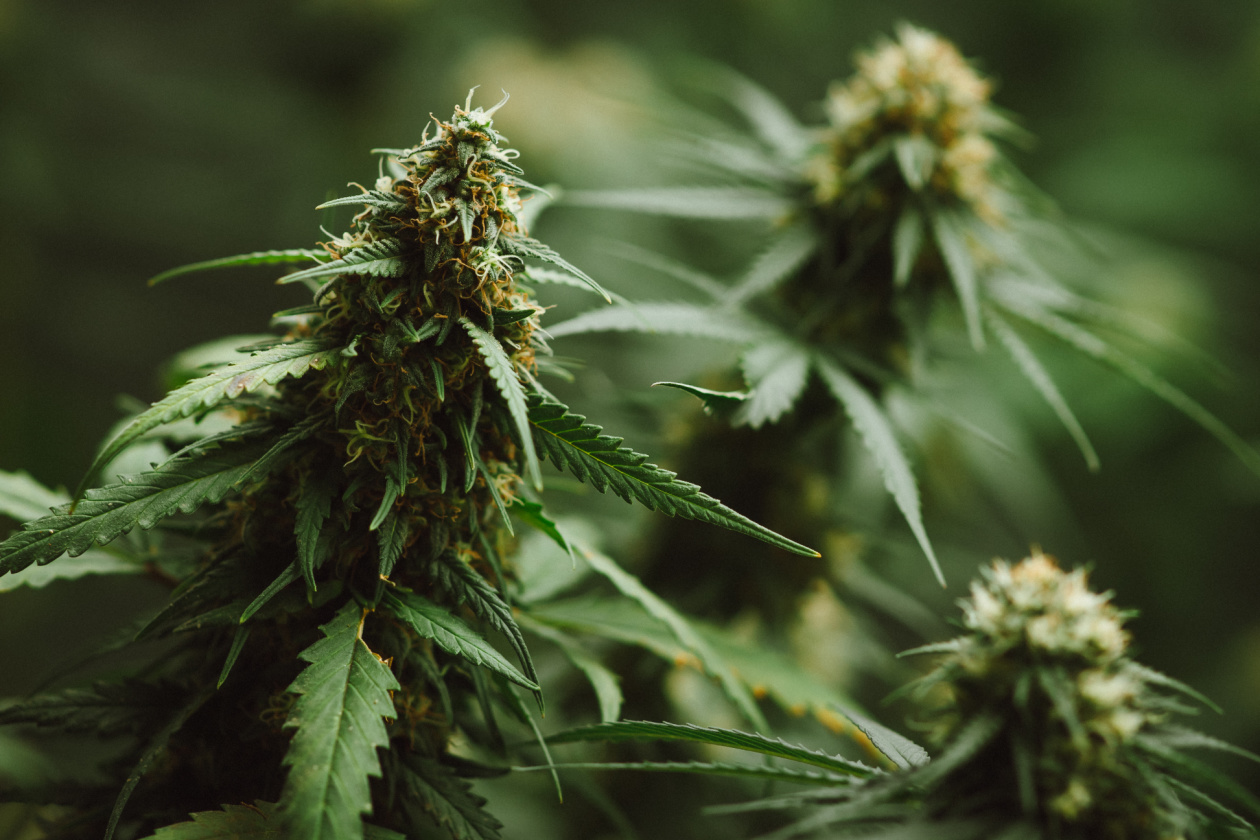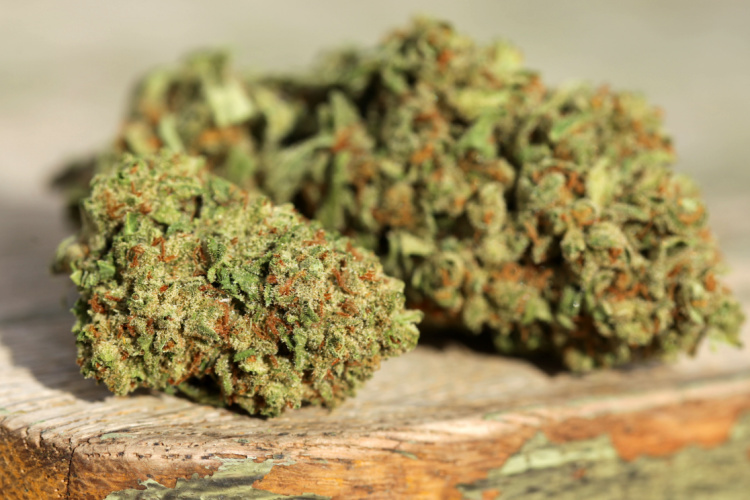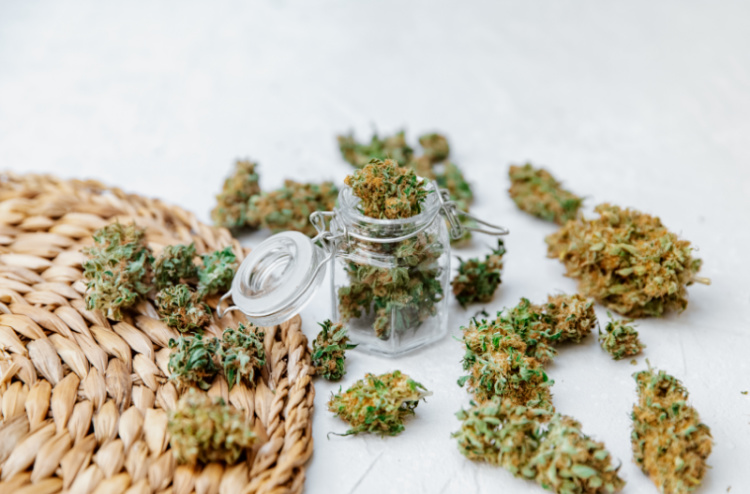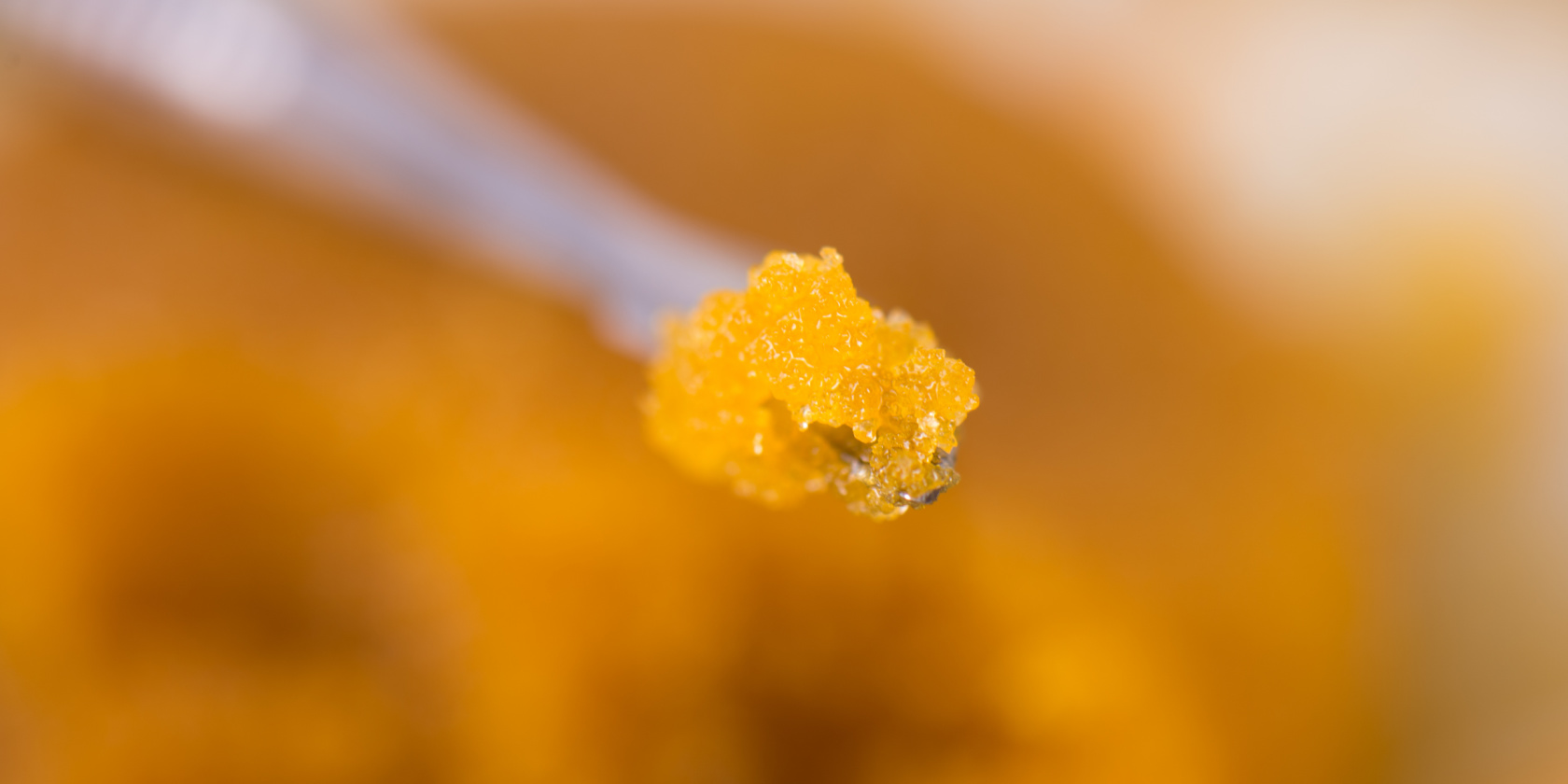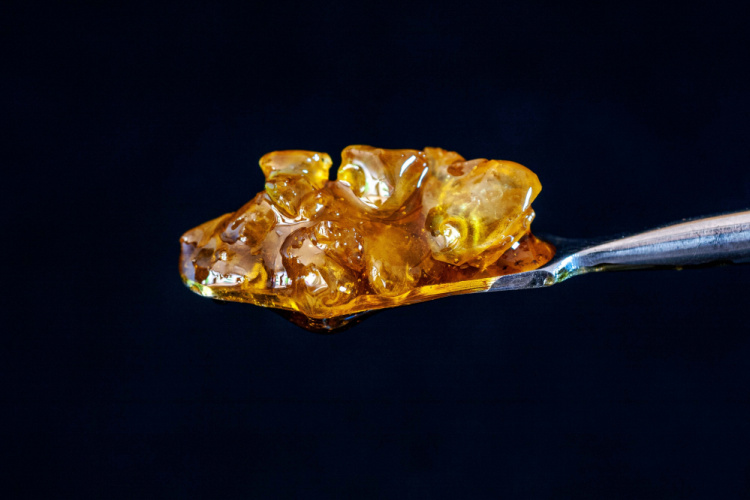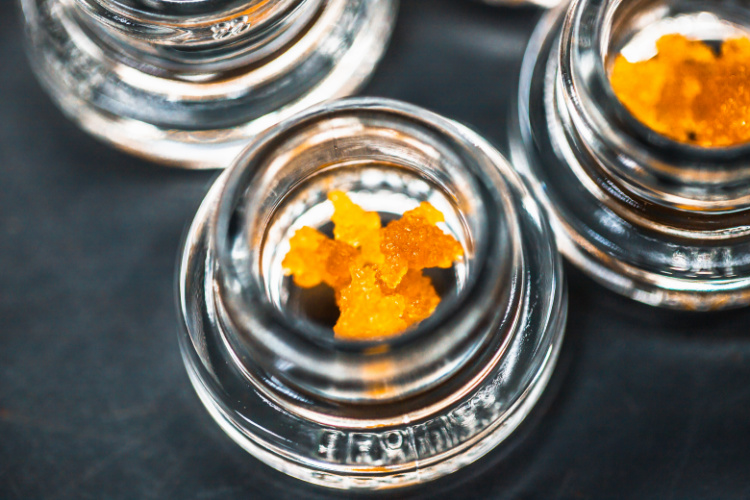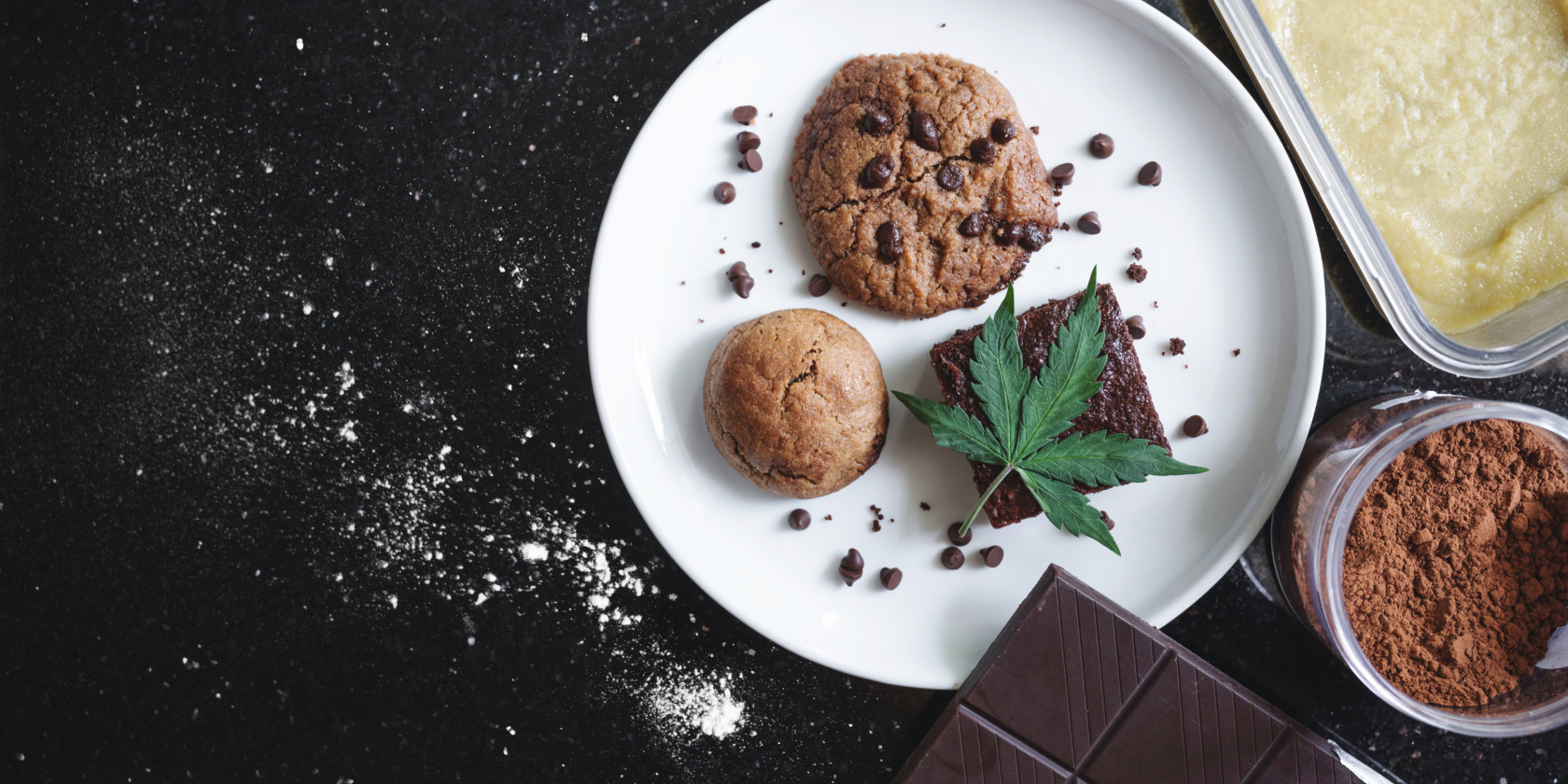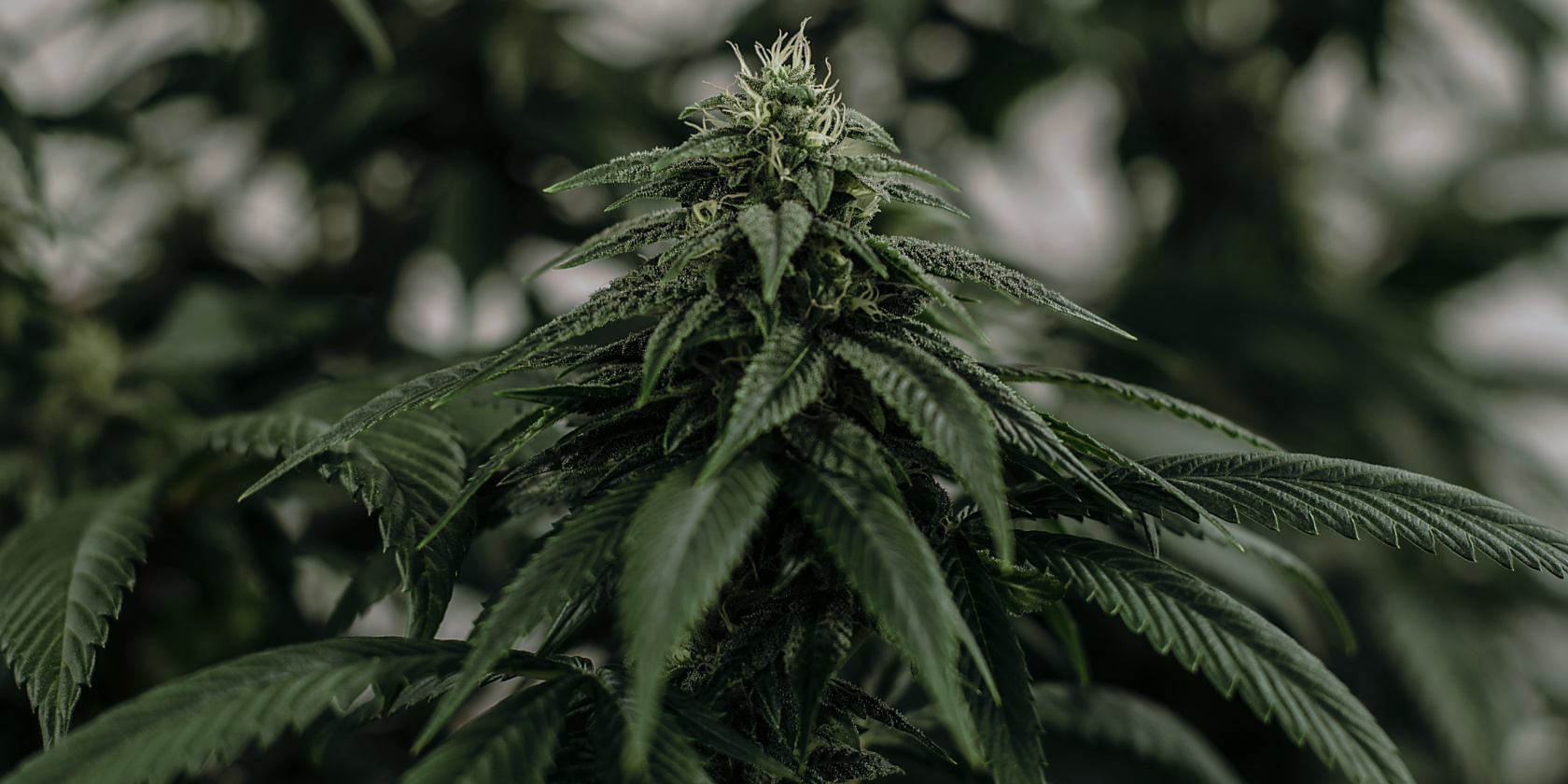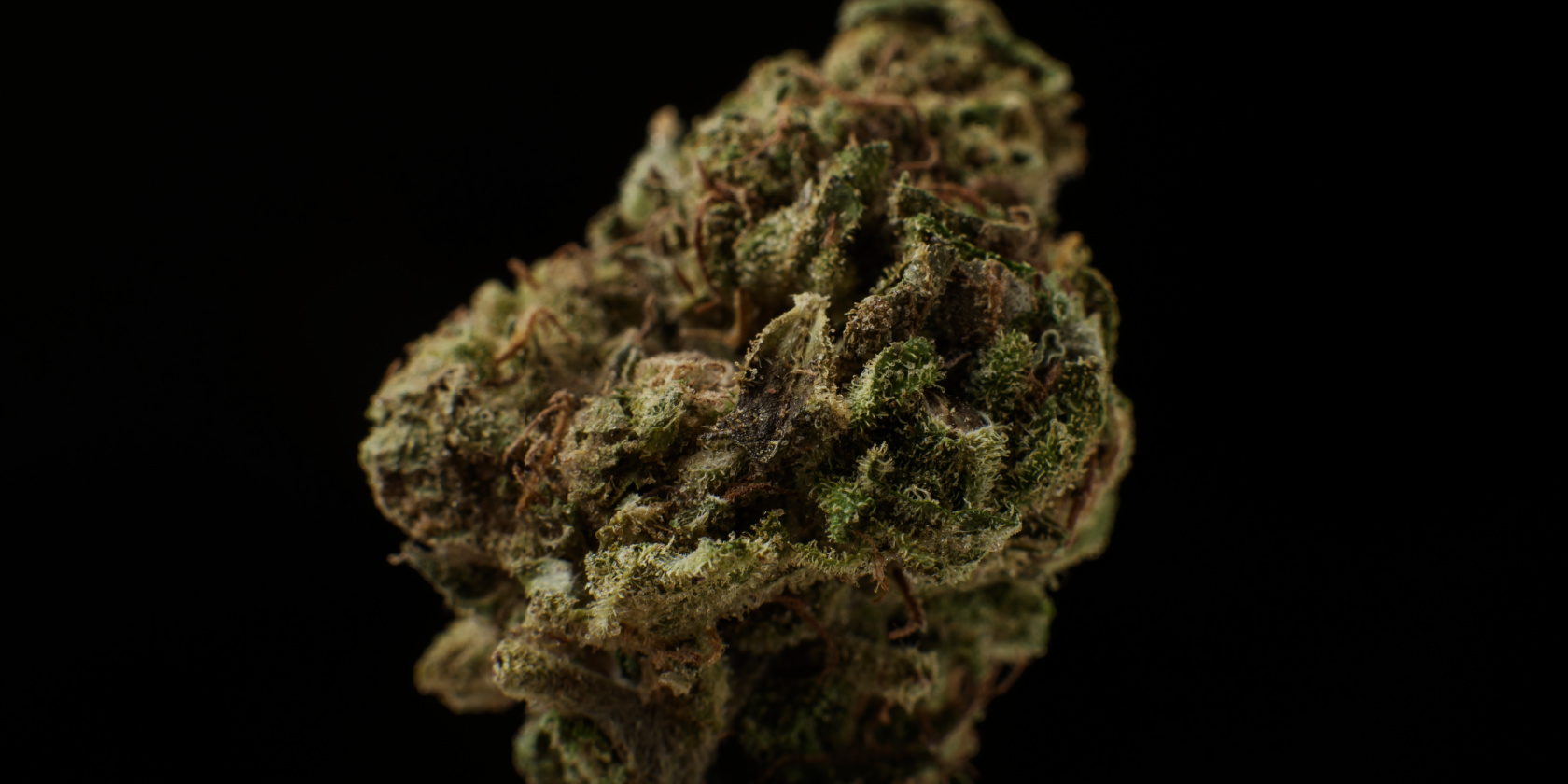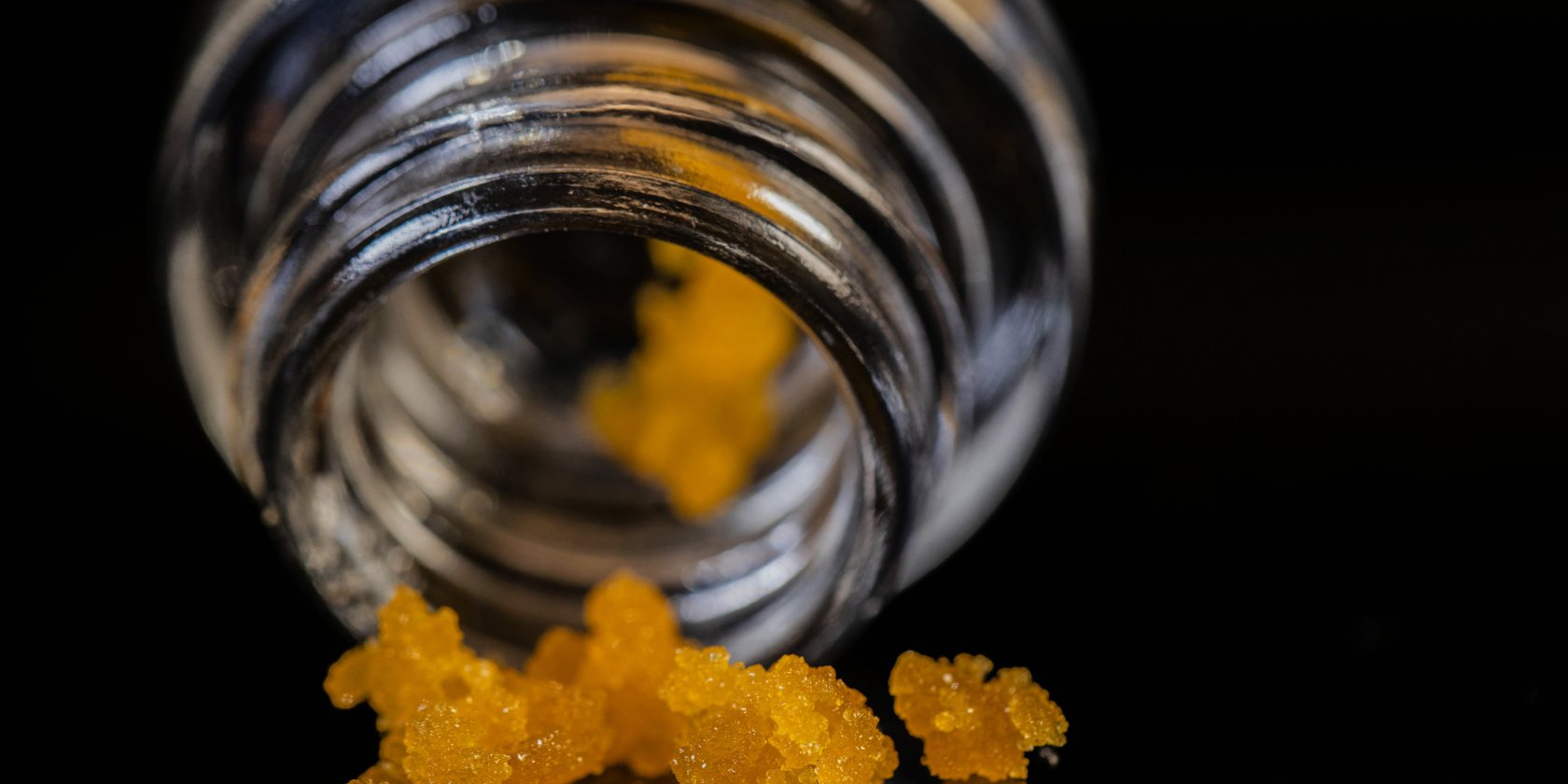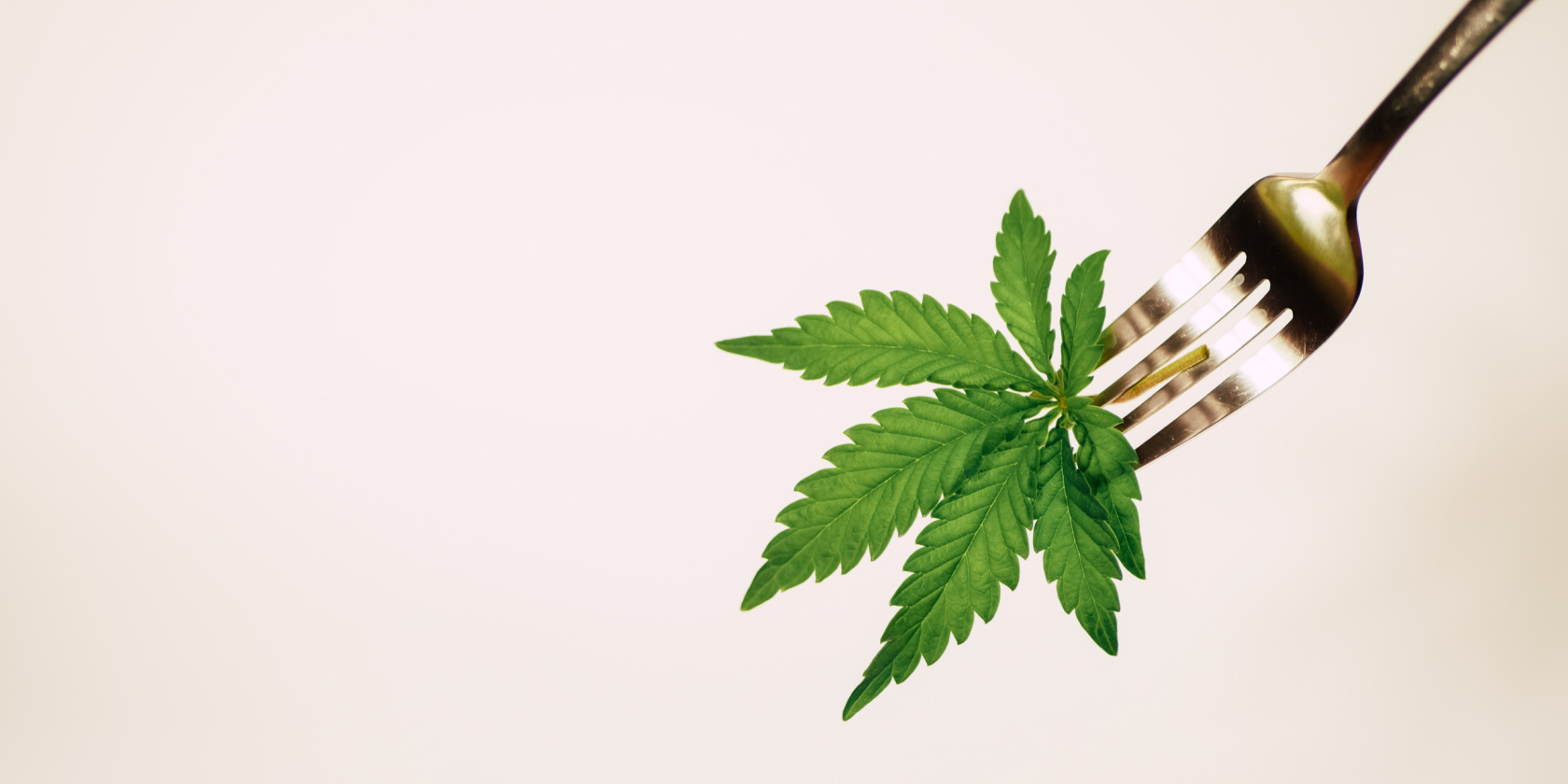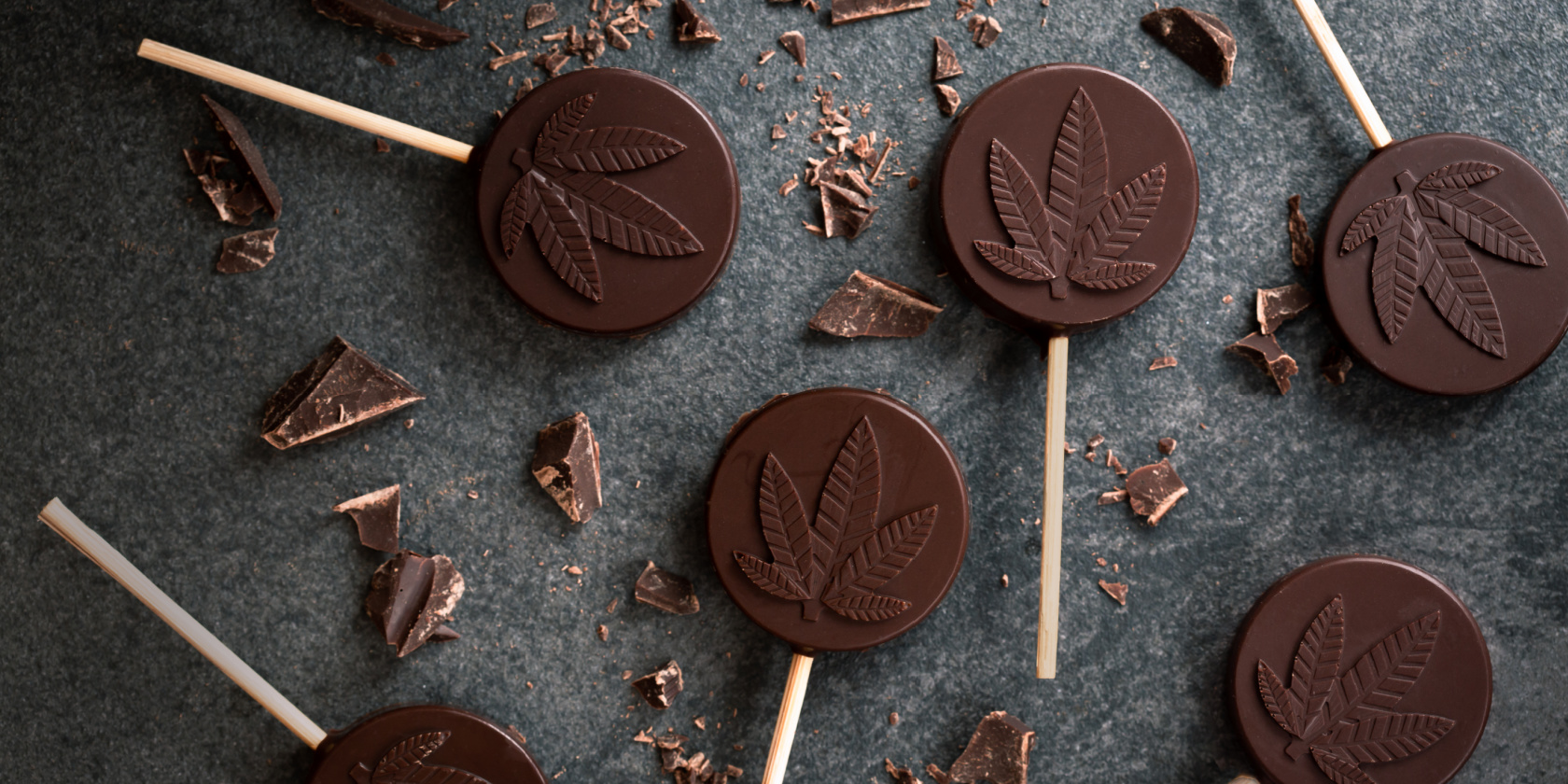Navigating the World of Medical Cannabis Dispensaries: A Patient's Guide
High-ly Educated: A Guide to Choosing and Visiting a Medical Cannabis Dispensary
In the realm of medicine, we often find ourselves confined to a narrow perspective, one that is limited by societal norms and conventional wisdom. But as the acceptance and use of medical cannabis continues to grow, we are presented with an opportunity to expand our understanding and approach to healing.
Just as the universe is vast and ever-expanding, so too is the potential of medical cannabis. And as with any new frontier, it is important to navigate it with care and intention. That is the purpose of this article - to provide a patient's perspective on the process of choosing and interacting with a dispensary.
In Washington DC, all adults over the age of 21, residents and visitors alike, can self-certify their medicinal use of cannabis and purchase cannabis flower, edibles, concentrates, and other cannabis products at regulated medical cannabis dispensaries, including at Takoma Wellness Center, the DMV’s first cannabis dispensary.
For the patient, the dispensary is not simply a place to acquire medicine, but a portal to a new realm of healing. It is a place where the patient can learn about the different strains of cannabis, their effects, and how to use them to best suit their needs. And it is a place where the patient can explore the different forms of consumption, from smoking and vaping to edibles and tinctures.
But just as one would choose a doctor or a pharmacy with care and attention, it is important to approach the process of choosing a dispensary with the same level of thought and consideration. It is a place where questions can be asked and answers can be received from knowledgeable and helpful staff. And it is a place where the patient can discover the true potential of medical cannabis. Takoma Wellness Center is such a place.
CHOOSING A DISPENSARY

Takoma Wellness Center is conveniently located in North West Washington DC near the Takoma Metro Station.
When it comes to choosing a dispensary, reputation and legitimacy are important. After all, it is not just about acquiring medicine, but also about finding a source that can be trusted. A reputable and licensed dispensary will not only provide high-quality medicine, but also offer guidance and education on its proper use.
Of course, location, selection, and pricing are also important factors to consider. It is important to find a dispensary that is easily accessible and has a wide range of products to suit the patient's needs. And while cost is always a concern, it should not be the sole determining factor in the decision-making process.
But how does one verify the licensing and legitimacy of a dispensary? One way is to check with the local government to see if the dispensary is properly licensed and in compliance with all regulations. Another way is to ask for information about the source of the cannabis and the testing process. A reputable dispensary will be transparent and forthcoming with this information. In Washington DC, be sure to check that your source is a regulated cannabis provider.
In essence, choosing a dispensary is about finding a balance between reputation, location, selection, pricing, and trust. It is about finding a place where the patient feels safe and comfortable, and where the medicine provided is of the highest quality. It is a process of discovery, and one that should be approached with an open mind and a discerning eye.
INTERACTING WITH A DISPENSARY
To truly make the most of the dispensary experience, one must first have a clear understanding of their own medical needs and treatment goals. Only then can one truly begin to explore the vast and varied selection of medical cannabis products available.
When approaching and communicating with dispensary staff and budtenders, it is important to remember that they are there to assist you in your journey towards wellness. They are knowledgeable guides, here to help you navigate the often-confusing landscape of medical cannabis.
When speaking with a budtender, do not be afraid to ask for recommendations. They have likely assisted countless individuals with similar needs and can provide valuable insight into which products may be best suited for you.
But do not stop there. Take the time to explore the selection for yourself. Browse the products, ask questions, and trust your intuition. It is important to remember that the journey towards wellness is a personal one and ultimately, only you can decide what is right for you.
The dispensary experience is not just about purchasing a product, it is about connecting with oneself and finding the path towards balance and harmony. Embrace the journey and trust the process.
QUESTIONS TO ASK AT THE DISPENSARY
As you embark on your journey through the dispensary, it is important to ask questions, not just about the products themselves, but about the source and testing process of the cannabis. Knowing where your medicine comes from and how it has been tested is crucial in ensuring its safety and effectiveness.
As you peruse the different strains, take the time to ask about their effects and how they can be used. Each strain has its own unique characteristics and can provide a different experience. It is important to understand the variations and choose the strain that aligns with your treatment goals.
But it is not only about the strains themselves, it is also about dosage. How much should you take, and how often? These are important questions to ask, as different individuals may have different tolerance levels and sensitivities.
And once you have your cannabis in hand, it is important to know how to store it properly to ensure its freshness and effectiveness. Ask about the best storage methods to prolong the life of your medicine.
Remember, the dispensary experience is about more than just purchasing a product. It is about understanding the source, the process, the strains, the effects, the dosage, and the storage of the cannabis. It is about taking the time to find the right medicine for you, and to ensure its safety and effectiveness.
ELEMENTS THAT MAKE A DISPENSARY VALUABLE TO A PATIENT
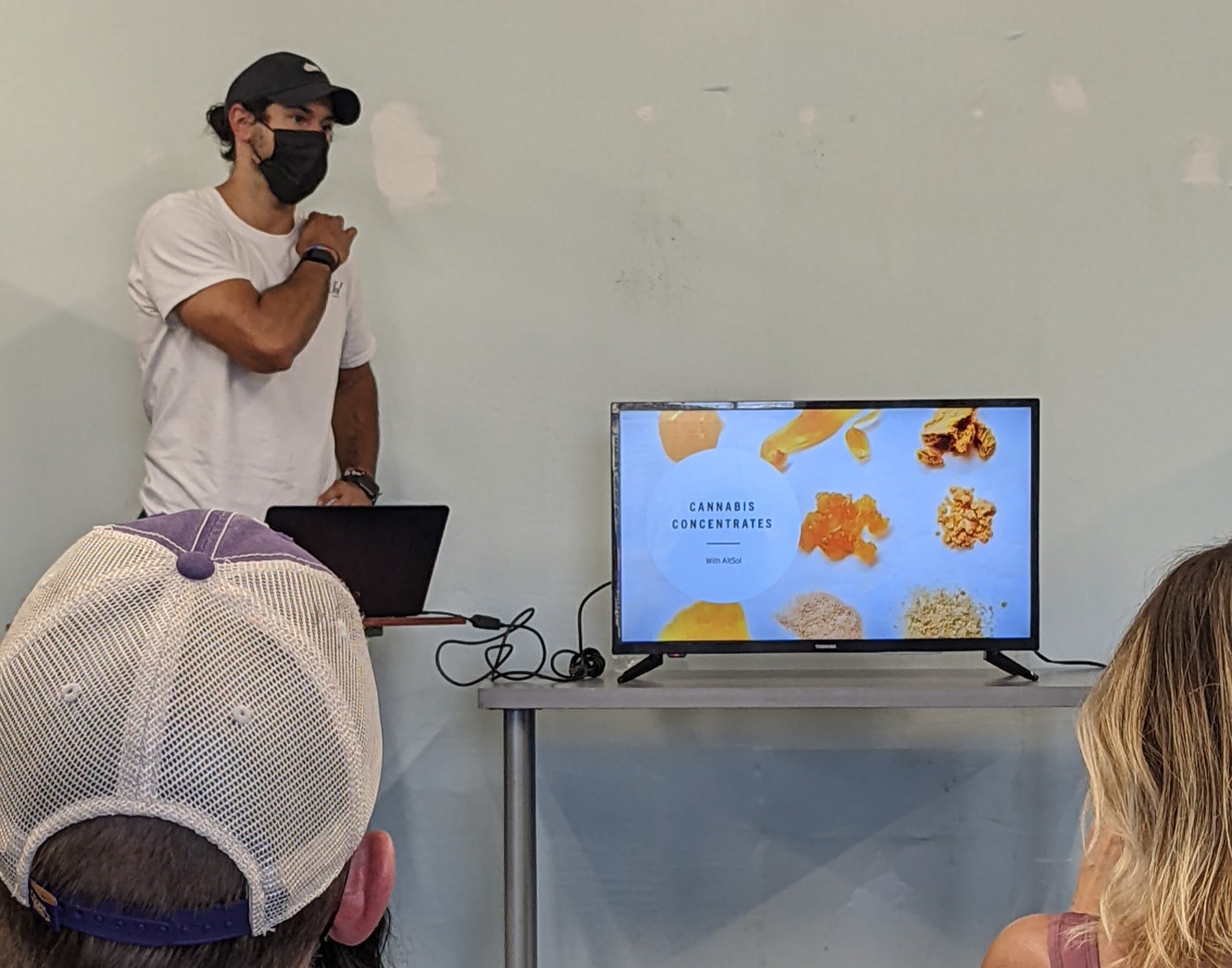
Go for in-depth education sessions at Takoma Wellness Center. Here’s a representative from AltSol, DC’s premier craft cannabis cultivator talking about craft concentrates at an educational session.
As we dive deeper into the world of medical cannabis, it becomes clear that a valuable dispensary is one that not only provides a wide variety of high-quality products, but also offers knowledgeable and helpful staff. A dispensary that is able to guide you through the process and assist you in finding the right medicine for your needs is of immense value. The budtender conversation should not be rushed; a patient should get all of their questions answered in a relaxed manner. Takoma Wellness Center encourages their budtenders to spend the time necessary to make each patient feel educated and heard.
It is also important to consider the quality of the cannabis itself. A dispensary that sources its products from reputable growers and subject them to rigorous testing is a valuable asset. The variety of products available is also crucial, as different patients may have different preferences and needs. Takoma Wellness Center stocks products from every licenced cultivator and manufacturer in the District of Columbia.
But a dispensary's value doesn't stop at its products and staff. Additional services, such as delivery and educational resources, can also greatly enhance the patient's experience. The ability to have your medicine delivered directly to your door and access educational resources to further your understanding of medical cannabis are invaluable. Takoma Wellness Center delivers in Washington DC.
A valuable dispensary is one that not only provides a wide variety of high-quality products, but also offers knowledgeable and helpful staff, sources its products from reputable growers, and provides additional services such as delivery and educational resources. It is one that is dedicated to helping patients find the right medicine for their needs and supporting them on their journey towards wellness.
THE FINAL WORD

Takoma Wellness Center has the best selection of cannabis products in the city!
As the acceptance and use of medical cannabis continues to grow, it is crucial for patients to have a clear understanding of how to choose and interact with a reputable and reliable dispensary. The key points to remember are to find a licensed dispensary, consider factors such as location, selection, and pricing, verify the licensing and legitimacy of the dispensary, have a clear understanding of one's own medical needs and treatment goals, ask questions about the source, testing process, strains, effects, dosage, and storage, and look for dispensaries that provide knowledgeable and helpful staff, high-quality cannabis, and additional services such as delivery or educational resources.
It is important to remember that the journey towards wellness is a personal one and the right dispensary will be a valuable partner on this journey.
The dispensary experience is not just about purchasing a product, it is about connecting with oneself, finding the path towards balance and harmony, and having a reliable and knowledgeable partner on this journey. Take the time to find the right dispensary for you and trust the process.
For patients in Washington DC, Virginia, and Maryland, Takoma Wellness Center is the right dispensary. Located in northwest Washington near the city’s border with Maryland, Takoma Wellness Center is accessible by Metro and car. Takoma Wellness Center is a very short walk from the Red Line’s Takoma Metro Station and also has on-site parking. Their selection is huge, featuring nearly 150 different strains of cannabis flower and concentrates, tinctures, and edibles galore. Self certify your medicinal use of weed and start medicating today!
Cannabis Topicals: How Do They Work?
Cannabis-infused topicals can be traced as far back as ancient Egypt, and today you’ll find a wide variety of topical THC and CBD products formulated to serve a wide variety of purposes.
In this post we will explain what cannabis topicals are and how they work. We will also cover the differences between topical THC and CBD products and how they might be used. Let’s dig in!
What Are Cannabis Topicals? How Do They Work?
Cannabis topicals are cannabis-infused products that are applied to the skin for localized relief. Cannabis extracts can be added to any number of topical products, and today you’ll find everything from salves, lotions, and balms offering a variety of formulations targeted at specific concerns.
Cannabinoids like THC and CBD are known for the effects they produce when inhaled or ingested, but they are equally able to produce effects in the skin. How? We can thank a system of receptors called the endocannabinoid system (ECS).
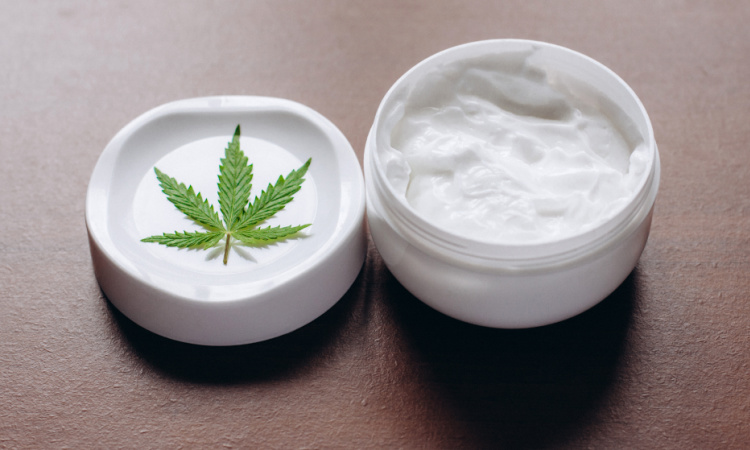
Aside from impacting basic biological functions like sleep, appetite and mood, the ECS is also active in the skin where there are many receptors able to utilize cannabinoids when applied topically.
While research on the endocannabinoid system’s role in skin function is still in early days, investigators are uncovering several potential benefits for using cannabinoids topically, such as:
- Reducing inflammation
- Pain relief
- Antimicrobial effects
- Anti-itch benefits
- Oil gland regulation
Together these properties may offer relief for many different symptoms or conditions related to the skin, and initial research has looked at everything from the treatment of inflammatory skin conditions like eczema, to the treatment of neuropathic pain and even how cannabinoids might impact more common skin conditions like acne.
Once applied, you should feel the effects of a cannabis topical within minutes, and effects typically last for about two hours.
Topical Versus Transdermal
You may come across another category of products when searching for cannabis topicals called transdermals. Transdermal products are, in fact, topical in that they are also applied to the skin. But there is one important difference between a topical and a transdermal product: Transdermal products are designed to penetrate all layers of the skin to eventually reach the bloodstream.
Most often sold as gels or patches, transdermal products offer deeper penetration of the targeted areas to which they are applied. Because they reach the bloodstream, they can offer system-wide benefits or effects as well. Transdermal patches, in particular, are designed to offer a steady and slow release of cannabinoids over a period of several hours, making them a great option for extended relief.
Like lotion and salve topicals, the effects of a transdermal gel or patch should be felt within a few minutes. The effects of gels last on average two to four hours, while transdermal patches can be designed to release their active ingredients for many hours. Be sure to check out the product label since this will vary from patch to patch.
While there are topical and transdermal products featuring a variety of different cannabinoids on the market, in most cases you will find the main active ingredients in cannabis topicals are THC, CBD or a combination of both. Let’s unpack them next.
Topical THC: Cannabis Salves, Lotions and More
One common question we get at Takoma Wellness Center is whether THC-infused topicals will make a person feel intoxicated, or whether using THC topicals might show up on a blood test.
Since topical products cannot penetrate the skin to reach the bloodstream, you should only feel localized effects to the application when using THC topicals. And, as research supports, using THC topicals alone shouldn’t show up in a blood test.
THC topicals are being investigated for the treatment of inflammatory skin diseases, neuropathic pain and even for the treatment of glaucoma. Many patients use THC-infused salves, lotions and balms to help them relieve muscle soreness, joint pain or other sources of pain and discomfort.
Keep in mind that transdermal products containing THC will penetrate through the skin to enter the bloodstream, which may produce feelings of intoxication and can show up on blood tests.
Topical CBD: How Do CBD Topicals Work?
Do CBD topicals like a lotion work any differently than topical THC? The answer is yes and no.
When applied topically CBD works, in essence, in much the same way as topical THC: by activating the cannabinoid receptors that are found in the skin. But CBD modulates different receptors than does THC, meaning that CBD may exert similar effects as THC but achieves these effects in different ways.
Like THC, CBD is being investigated for inflammatory skin conditions and for the treatment of different kinds of pain and discomfort, among other uses.
Some patients prefer the topical effects of CBD, or want to avoid THC altogether, making topical CBD a great option. But since THC and CBD work differently in the body to provide similar benefits, many products will feature a combination of both THC and CBD in order to take advantage of their synergistic effects.
When it comes to THC versus CBD topicals, there is no right or wrong answer. Ultimately it comes down to experimenting with different products and formulations to find what works best for your needs.
Cannabis Topicals: Final Thoughts
We hope this introduction to cannabis topicals has been helpful! If you have further questions about how these cannabis products work, or you’d like some help navigating the topical products we carry at Takoma Wellness Center, please come visit us today.
Our team is always here to help you make the best and most informed decisions you can when shopping for medical cannabis. Of course you can always browse our live online menu, too! Either way, we look forward to serving you.https://takomawellness.com/product-education/topicals/
Fuel Biscuits Strain Review
It seems like there’s no shortage of rare boutique strains out there. And while some of them aren’t exactly worth your time, many of them are.
One that falls into that latter category is the topic of today’s strain profile. We’re talking about Fuel Biscuits, an indica-dominant strain that’s related to another genetic line you’ve probably heard of. We’ll check out some of the main traits of Fuel Biscuits in this strain review, along with some benefits it may have for medical marijuana patients.
Fuel Biscuits: A Big, Green, Indica-Dominant Marijuana Strain
There is no denying the visual appeal of strains with dazzling purple hues or bright orange hairs. And while these definitely can be the marks of high-grade cannabis, those colorings aren’t the be-all, end-all of marijuana quality. In fact, many verdant green colored plants match the caliber of any rainbow-hued buds.
That’s exactly what you get with Fuel Biscuits. Its flower features bursts of vibrant green colors that range from lime to deep forest green. It’s got an aroma that you’d only find in a cannabis plant, combining tones of diesel fuel with citrus, sweet, sour, and spicy scents. When smoking this strain, the fragrant building blocks coalesce into a sweet flavor, leaning heavily on qualities like berries and cherries to create a lip-smacking taste.
A major determinant of Fuel Biscuits flavor is its genetic line. As a GSC x Gelato cross, it’s a member of the illustrious Girl Scout Cookies family. That makes it the closest thing you get to cannabis royalty these days. It also gives Fuel Biscuits a solidly indica-dominant genetic profile, which influences its effects.
Effects and Properties of Fuel Biscuits
Appearance, aroma, and flavor are only part of the picture that Fuel Biscuits paints, of course. The rest of the image comes clearly into view once you take a look at this strain’s effects. And with an average THC content that hovers between 25% and 27%, Fuel Biscuits flower offers potency.
Its indica-dominant properties include heavy body relaxation, with tingles that hang over your body like a warm blanket. However, it does demonstrate some more properties typical of a sativa strain: It definitely features a rush of euphoria along with a general uplifting feeling. Make sure to keep snacks on-hand though, since this strain can instill a serious case of the munchies.
Possible Benefits of the Fuel Biscuits Strain
If you’re a medical patient, there’s plenty to love about Fuel Biscuits. Patients have noted that it may be an effective way to lessen anxiety and stress. Additionally, some have reported that it helped them with feelings of depression. As with most strains of medical cannabis, it could help patients find relief from chronic pain. Finally, it also could improve low appetite.
Experience the Fuel Biscuits Strains at Takoma Wellness
Are you interested in trying this strain for yourself? You’re in luck! You can find this rare strain at Takoma Wellness, along with a huge variety of other strains and other products in our online store.
Marijuana Wax: What Is It and How to Use It
We’ve written previously about cannabis concentrates, the potent and highly flavorful extracts that have taken the cannabis world by storm since their introduction roughly twenty years ago. Today, we’re going to take a deep dive into the story of one of the most popular forms of concentrate: marijuana wax.
What is marijuana wax? At the simplest level marijuana wax (also commonly referred to as cannabis wax, THC wax or simply wax) is a dense, shelf-stable, and highly potent extraction of cannabinoids such as THC and CBD as well as flavorful compounds such as terpenes and flavonoids. And if you’re wrestling with chronic symptoms or conditions that resist treatment with regular cannabis flower, wax can present an effective and powerful alternative.
In this post we’ll discuss important topics, explaining how cannabis wax is made and answering such questions as “how to smoke wax.” By the end, you should have a firm grounding in the use of this potent and intriguing marijuana product.
What Is Marijuana Wax? An Introduction
As we hinted a moment ago, while wax is relatively new on the scene its potency and flavor have made it one of the hottest products on our dispensary shelves. Typically taking the form of a creamy, amber-colored waxy substance, the consistency makes it relatively easy to grab just the right amount, a topic we’ll return to in a moment.
The first thing to know about wax is that—like all cannabis concentrates—it’s far more powerful than cannabis flower. If the strongest flower tops out around ~30% THC, concentrates like wax can easily reach 90% THC. Above all, this means that these products should be approached with the utmost caution and respect, as their effects can be surprisingly intense and long-lasting.
One of the most important questions we receive from patients around marijuana wax is: Is it produced using solvents? The answer is yes. In this sense, “solvents” are products including butane, CO2, and ethanol that separate the crucial “active ingredients” in cannabis—the cannabinoids, terpenes, and other components—from the flower.
Clean, lab-tested, carefully made solvent extracts like the wax we offer feature exceptional flavors, aromas, and potency. And any trace of solvent is carefully removed before packaging and sale.
How to Smoke Wax: Top Tips
Even for seasoned fans of marijuana concentrates, it’s important to remember that these products are extremely potent. These products are best not used by cannabis naive patients. Especially if you’re new to concentrates, we advise our customers to “start slow and go low.” While the effects of having too much THC can be unpleasant, it’s important to know that they’re rarely dangerous. In the great majority of cases, unwanted side effects subside after a couple of hours. Remember: You can always take more cannabis later, but you can’t take less!
While tiny amounts of wax can be added to a joint or a bowl, it’s most common for it to be consumed through a specialized pipe called a “dab rig.” Similar to a bong or a water pipe, this specialized tool features a metal or quartz “nail” or “banger” in place of a regular bowl. This piece features a flat-bottomed surface designed to retain heat.
Speaking of which, you can’t heat up the nail or banger with a match or regular lighter. We recommend using a butane-powered kitchen torch for a powerful, tightly focused flame. As with all such devices, you’ll want to take all necessary precautions and be safe.
Finally, you’ll need a dabbing tool: a tiny spear-like implement that allows you to gather the desired amount of wax and then apply it to the hot nail before inhaling just as you would from any other pipe. How much to start with? We recommend the smallest possible amount: A tiny crumb or a sliver.
Smoking Wax: In Conclusion
As D.C.’s #1 family-run medical marijuana dispensary, we’re dedicated to helping you get the very most from your cannabis experience. If you have other questions about wax, concentrates—or anything else in the world of cannabis—be sure to visit our Patient Resources section for more useful information. Or: just ask! We’re always here to help.
Takoma Wellness Center | Edible Dosing Guide
Cannabis edibles are one of the most popular—not to mention one of the most delicious!—ways to reap the benefits of cannabinoids such as THC and CBD. But even for seasoned patients calculating an edible dose can be challenging, leading many to have a less-than-optimal first-time edible experience.
As D.C.’s #1 family-run medical marijuana dispensary, we’d like to help you avoid a potentially unpleasant experience. In today’s post, we’ll discuss THC dosing in edibles, the best way to take edibles, and other topics relating to edible dose questions. Ready? Let’s dive in!
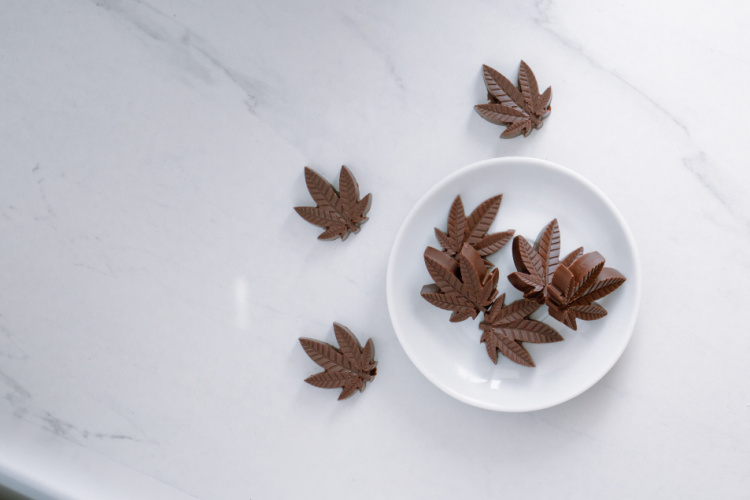 What Are Edibles, and What Do I Need to Know?
What Are Edibles, and What Do I Need to Know?
Edibles are nothing more than familiar foods or beverages—chocolates, cookies, or iced tea, to name a few—infused with cannabinoids (the “active ingredients”) from the marijuana plant. While they’re an easy and intuitive way to access those beneficial compounds, they work slightly differently than they do in smoked or vaped cannabis.
When you consume an edible, the cannabinoids are processed through the liver and stomach as opposed to the lungs. While the bioavailability—or amount of cannabinoids actually accessed by your body—decreases, the apparent dosage increases. In simple terms, this means that the THC dosage in edibles feels stronger than it does for an equivalent amount of smoked or vaped cannabis.
What’s more, the experience typically comes on much slower than smoked cannabis (approximately 30 – 90 minutes versus to one to five minutes when inhaling) and it lasts much longer (approximately two to six hours as opposed to one to two hours).
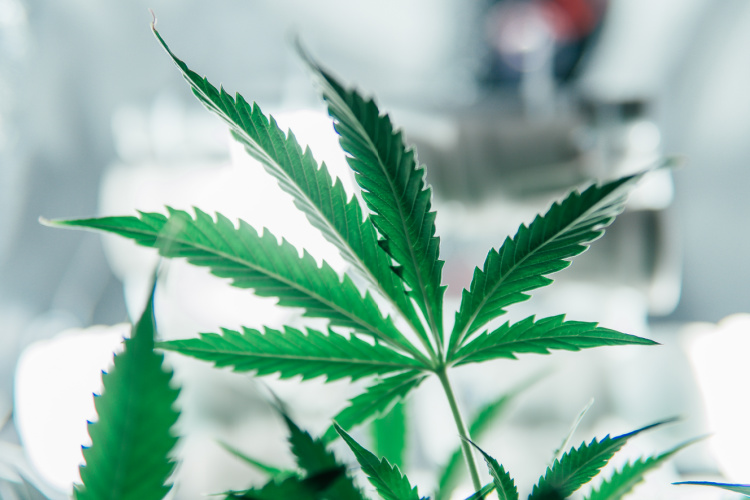 Is There a Recommended THC Dosing?
Is There a Recommended THC Dosing?
Of course, there’s no FDA-recommended THC dosage guide. But while everyone reacts slightly differently to THC, it’s possible to formulate a few basic guidelines and principles for determining an edible dose:
THC Dosage: 1 – 2.5 mg
Typical Effects: Mild relief of symptoms including pain, stress, and anxiety; heightened focus and creativity. Great for first-time consumers, or more experienced consumers interested in microdosing.
THC Dosage: 2.5 – 15 mg
Typical Effects: Stronger relief of symptoms; euphoria; impacted coordination and perception. Great for stubborn symptoms not affected by smaller doses; potential treatment for insomnia.
THC Dosage: 30 – 50 mg
Typical Effects: Strong euphoria; significantly impacted coordination and perception. Great for consumers with a high tolerance for THC, or whose GI systems don’t absorb cannabinoids well.
THC Dosage: 50 – 100 mg
Typical Effects: Seriously impacted coordination and perception; possible unpleasant side effects including nausea and increased heart rate. Best for patients managing serious symptoms and conditions, or for those with a high THC tolerance.
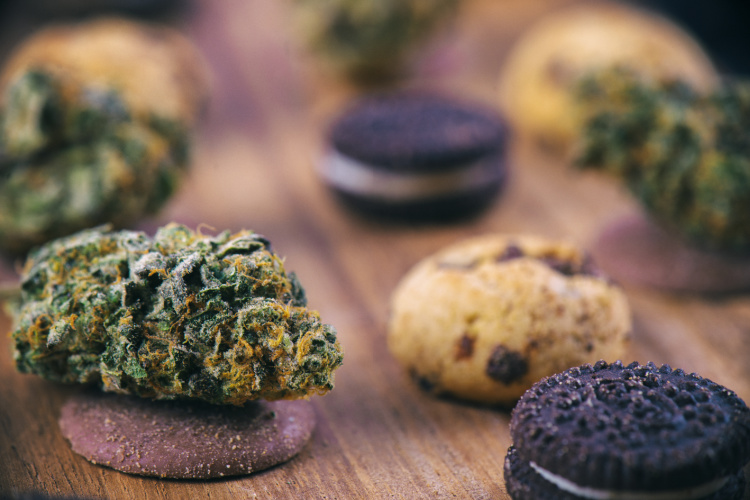 First-Time Edible Experience: Top Tips
First-Time Edible Experience: Top Tips
While the effects of having too much THC can be unpleasant, it’s important to know that they’re rarely dangerous. In the great majority of cases, unwanted side effects subside after a couple of hours at the very most.
That said, we’d like you to have as positive a first-time edible experience as possible. This means that you should consider taking a low edible dose to start for a more rewarding experience. Remember: You can always take more cannabis later, but you can’t take less!
There are other factors to consider as well, including your body mass index (BMI), your age, your experience level with cannabis, and your recent food intake. If you’re familiar with cannabis’s effects, you’ll be better prepared for a positive edible experience. Similarly, a recent meal will tend to slow down the onset of the THC, an experience that many people find more pleasant and manageable than a fast onset.
Edibles at Takoma Wellness Center
Do you have other questions about the THC dosage in edibles (or anything else in the world of cannabis?) Just ask! We’re always here to help.
We’d love to see you at our DC dispensary to help you find the right edible for your needs, stop by today to speak with our helpful team or browse our menu online from the comfort of home! Either way, we look forward to serving you!
Understanding Cannabis Terpenes: A Foundational Guide
We’ve talked about a few of the most important compounds in cannabis before: cannabinoids such as THC and CBD that give the plant its medicinal and euphoric effects. But while we sometimes describe the cannabinoids as the major “active ingredients” in cannabis, they’re hardly the only piece of the puzzle. If you’re new to cannabis or looking to deepen your knowledge, it’s time to get familiar with cannabis terpenes.
A large family of aromatic oils, cannabis-derived terpenes are best known for giving different strains their distinct aromas and flavors. Behind the scenes, these compounds also lend powerful medicinal benefits to the cannabis plant’s already potent effects. Let’s dive in!
What Is a Cannabis Terpene? An Introduction
In scientific lingo, terpenes are aromatic hydrocarbons—what many of us might call “essential oils”—found in the cannabis plant. They’re produced and secreted by trichomes, the same tiny silvery glands that produce THC, CBD, and other cannabinoids.

But terpenes are hardly unique to cannabis. If you’ve ever wondered why cannabis can smell like fresh fruit, Christmas trees, or even Diesel fuel, terpenes are the common denominator. They occur in countless natural flora, and even in some insects and animals! In fact, some botanists believe that terpenes are the single largest and most diverse group of natural products on the planet. For the purposes of this post, we’ll stick with the topic of cannabis-derived terpenes.
As we’ve hinted, terpenes do more than simply add enticing flavors and aromas to cannabis. Research suggests that terpenes work in partnership with cannabinoids in what’s termed the “ensemble” or “entourage effect” to produce specific therapeutic results. While still theoretical, a growing body of evidence supports the concept, and it may hold the key to future therapies based on cannabis-derived terpenes.
What Is a Cannabis Terpene? Meet the Top Five
There are a great many terpenes in cannabis (at least 150 of them)! Today, let’s begin with the five most common:
Myrcene
Just as THC is the most abundant cannabinoid in cannabis, myrcene is its most abundant terpene, meaning it is found in some concentration in the majority of strains. Characterized by a fruity and grapelike flavor, myrcene is gently sedative. What’s more, this terpene synergizes and helps potentiate the actions of other terpenes and cannabinoids, making it a crucial player in cannabis’ active ingredient ecosystem.
Myrcene-rich strains include: Skunk XL, White Widow, and Special Kush
Alpha-pinene and Beta-pinene
Known collectively as “pinene,” these related terpenes are identified by their distinctively piney aroma. You’ll also find this terpene in pine trees, orange peels, and herbs such as basil and rosemary. Studies suggest that pinene exerts a gentle anti-inflammatory effect, reducing inflammatory responses such as asthma.
Pinene-rich strains include: Strawberry Cough, Blue Dream and Dutch Treat
Caryophyllene
This spicy and peppery terpene is being investigated for its analgesic and anxiolytic effects. It also binds to our cells more readily than many other terpenes, making it a valued ingredient in some topicals and balms.
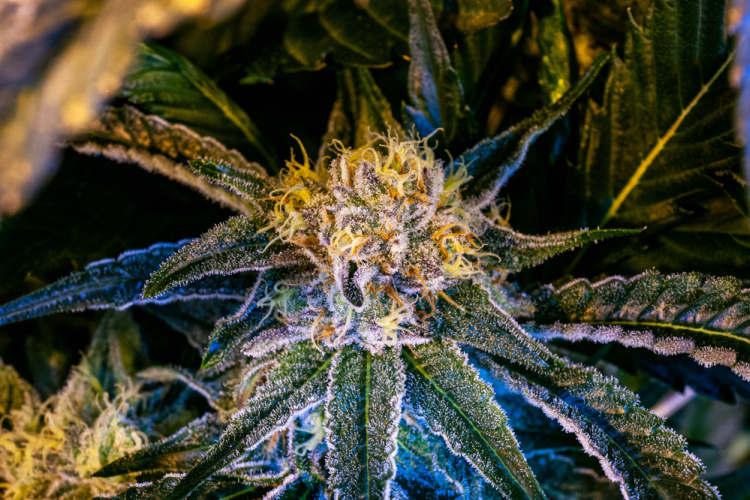
Caryophyllene-rich strains include: Super Silver Haze, OG Kush, and Rock Star
Limonene
Bright and cheerful-smelling, this citrus-scented terpene adds its uplifting effects to many cannabis strains. Clinical studies underscore its potential use to reduce stress and anxiety. And believe it or not, at least one study suggests limonene may have a role to play in fighting COVID-19.
Limonene-rich strains include: Sour Diesel, Durban Poison, and Jack Herer
Linalool
A main component in the classic “marijuana smell,” linalool may also help fight anxiety and depression. Research suggests this important, cannabis-derived terpene might also help reverse the cognitive impairment and memory loss associated with neurodegenerative disorders such as Alzheimer’s Disease.
Linalool-rich strains include: Amnesia Haze, Special Kush, and Lavender
Cannabis Derived Terpenes: Wrapping Up
We hope this introductory guide on cannabis terpenes has been helpful! Not just the flavor and aroma powerhouses of the cannabis plant, these compounds are showing therapeutic promise all their own and may be key to understanding how cannabis offers its multifaceted effects.
Do you have other questions about terpenes (or anything else in the world of cannabis)? Just ask! We’re here to help. You can always visit our dispensary to learn more about terpenes from our friendly and knowledgeable team, or peruse our online menu to see what we’ve currently got in stock. We look forward to serving you!
Microdosing THC: How to Access the Health Benefits (Without the High)
A growing number of cannabis consumers are finding that less truly is more when it comes to THC. Rather than reaching for the “biggest bang,” they’re using tiny—even barely perceptible!—amounts of THC while still accessing the plant’s many benefits.
How low can you go when it comes to dosing THC? The extreme version of this trend is called “microdosing THC,” and it’s a fascinating and potentially impactful way to get the benefits of cannabis without the potential distraction of an intoxicating high.
This isn’t merely wishful thinking. As a growing body of evidence suggests, the majority of people actually derive greater benefit from lower dosages of cannabis. If you’re looking to fight pain and inflammation, reduce anxiety and stress, or find deeper, more restorative sleep, you’ll generally get better results (and stretch your cannabis dollars further) by using less.
In today’s post, we’ll share everything we know about how to microdose THC, including best practices, potential benefits of microdosing THC, and specific products that make it easy to do. You may be one of the many who find that using tiny amounts of cannabis actually imparts more lasting and sustainable benefits than using a lot.
Ready? Let’s begin.
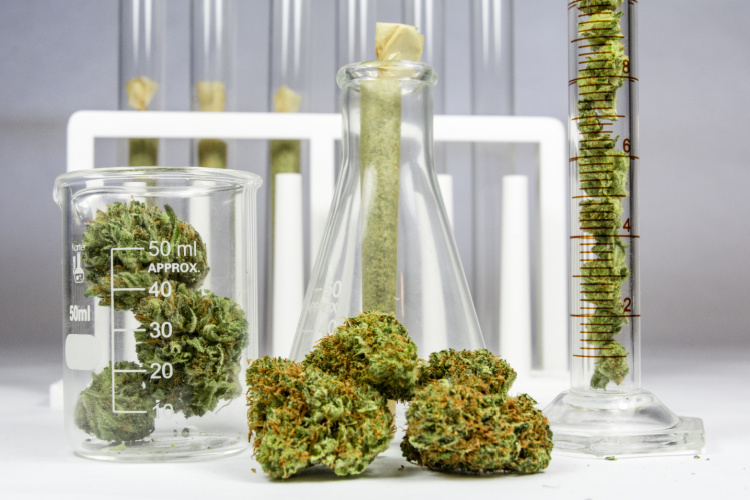 Benefits of Microdosing THC: Basic Principles?
Benefits of Microdosing THC: Basic Principles?
The concept behind microdosing THC is fairly simple: While we know that cannabis compounds such as the cannabinoids THC and CBD (as well as terpenes and other components) can impart beneficial medical effects, the psychoactive effect of consuming THC—what most of us refer to as “the high”—can be distracting or unwelcome in certain circumstances.
What inspired microdosing? The concept of microdosing THC was initially inspired by the practice used with hallucinogens such as LSD or psilocybin mushrooms, both of which have demonstrated a number of potential benefits.
While we offer a wide range of non-intoxicating high-CBD or CBD-only products, sometimes it’s preferable to consume very small amounts of products that contain multiple cannabinoids instead. That’s where microdosing THC comes in. It consists of consuming a very minimal dose of a high-THC product. At appropriate doses, many microdosers find the subjective effects subtly enjoyable yet effective over a longer period than they might normally.
What does the research say? One study from 2012 found that tiny doses of the synthetic cannabinoid-based medication Nabiximols provided better pain relief than traditional opioid-based painkillers. Another study published in 2014 found that extremely low doses of another synthetic cannabinoid compound (Nabilone) produced a “significant improvement” in symptoms of post-traumatic stress disorder (PTSD).
The fact that these two studies incorporated synthetic cannabinoids may be more of a reflection of the challenges of conducting cannabis research than a statement about cannabinoids themselves. For instance, a 2017 study found that lower doses of THC produced far better outcomes than higher ones in a mock job-interview scenario.
What are some ways you might incorporate the benefits of microdosing THC into your daily routine? Let’s take a closer look.
How to Microdose THC: Subjective Effects
If you’re thinking about microdosing THC, there are a few things you should keep in mind in order to increase the odds of a truly beneficial outcome. Microdosing THC is all about calibration. Rather than maxing out THC levels for an overwhelming mind/body experience, the small doses associated with microdose THC are designed to deliver predictable, consistent, and, most of all, sustainable effects.
The effects of microdosing are generally far more subtle than a full dose of THC, and can vary from person to person depending on several factors including the cannabis strain, dosage level, and your personal tolerance. In general, the effects are more subtle and controlled, allowing you to experience the possible therapeutic benefits of THC while continuing to go about your day unimpeded by the intoxicating effects.
When we discuss the possibility of microdosing with our Washington, D.C. dispensary customers, the first question we often hear is: “What does microdosing THC feel like?” The answer is that consuming a microdose is a much more relaxed and less intoxicating experience than ingesting a regular dose. The intense euphoric, intoxicating, and mind-altering effects associated with cannabis are much milder—and sometimes barely noticeable—when using microdose THC. This can be a huge boon for people who don’t really want to feel “high,” especially in daytime or work environments.
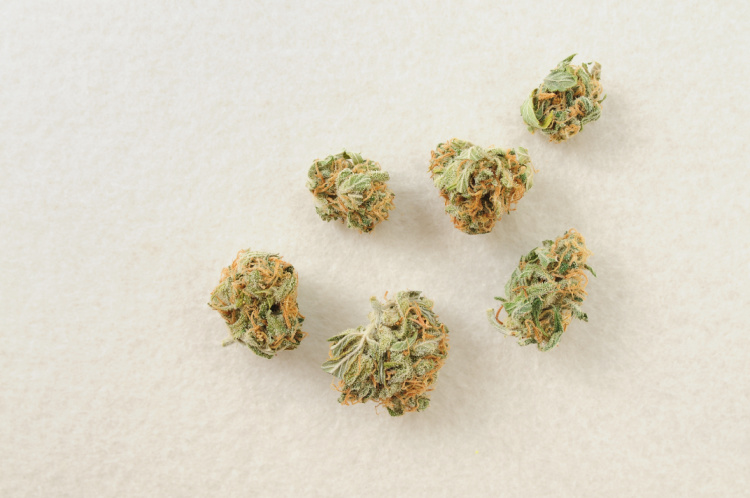 How to Microdose THC: Best Practices
How to Microdose THC: Best Practices
Microdosing cannabis can be a great strategy for people who need to perform on a high cognitive level throughout the day. Many of our customers report that microdosing THC not only allows for a clear state of mind, but may help foster an calmly alert and focused state. A clear mind is one of the most sought-after microdosing benefits and in our experience, a big reason why many people turn to microdosing THC in the first place.
Once you get used to the experience of microdosing cannabis, you may find that in certain situations a microdose can be more than enough to impart gentle benefits. For example, those who use cannabis to help manage symptoms of anxiety and may find that THC actually worsens their symptoms. As we referenced earlier, research indicates that using minimal THC is a far more reliable way to derive maximum benefit from this potent plant-based medicine than taking a lot of it.
Speaking of which, how much is too much? As we explain in our Edibles Dosing Guide, microdose THC amounts typically fall in the 1 mg to 2.5 mg range. Sound like too little? Hardly. One 2020 study on pain management found that even a 1 mg dose of THC produced a significant decrease in pain compared with a placebo.
Is it “bad” to feel slight intoxicating effects while microdosing THC? That’s entirely up to you. If your goal is maximum mental clarity and focus, then we’d recommend dialing your dosage down until you can’t detect any psychoactivity whatsoever. But if you find you tolerate a little “buzz,” you can try increasing the dosage until the effects are just barely perceptible.
As with all uses of cannabis for specific outcomes, it’s helpful to approach microdosing with a bit of a “scientist mind.” Take your time assessing the effects, being mindful that you may actually feel the results the following day.
We recommend you begin with the lowest dose for a few days or a week. If desired, increase your dose by a tiny increment after at least three days if you aren’t experiencing the desired effects. If you’re convinced you require a second dose on the same day, we recommend you wait at least two hours after taking the first one to avoid potentially taking too much. At these low doses, the effects are unlikely to be extreme, but we’re committed to you getting the maximum benefit from cannabis, no matter what dosage you’re working at!
Remember: Whether you’re microdosing THC for the first time or starting up a new regimen, the smallest dose possible is a good place to start. Remember, too, that our bodily physiology can change over time. After taking a break, it’s wise to reset to the lowest dose every time you start a new round of microdosing.
Pro Tip: If you’re looking for an informative and interesting read on the subject of microdosing, here at the dispensary we especially enjoyed Danielle Simone Brand’s book: Weed Mom: The Canna-Curious Woman’s Guide to Healthier Relaxation, Happier Parenting, and Chilling TF Out.
Microdosing THC: Specific Consumption Methods
Here’s something to consider: Not all cannabis consumption methods yield the same results.
When you smoke or vape cannabis (whether in large or microdose amounts), you will generally feel their effects much more quickly than with other consumption methods, typically within a matter of minutes. However, unless you take the time to carefully weigh each dose with an extremely precise scale, it can be hard to tell just how much THC you’re actually ingesting, causing you to ingest more than you intended.
That’s a major reason we prefer other consumption methods for microdosing, such as tinctures and oils. This liquid format allows you to measure your doses much more precisely, so you can dose accurately and consistently.
Edibles can be a great alternative as well, especially those that are already portioned in individual servings. However, edibles—especially when homemade—can be inconsistent when it comes to accurate dosing since the distribution of cannabis throughout an edible may not be perfectly even.
Lastly, while microdosing THC may be what many are seeking to do, that doesn’t mean that the benefits of microdosing are limited to just THC. Microdosing CBD or a combination of THC and CBD may also yield great results. Ultimately, it’s up to you to experiment a little and find out what works best for your situation, your goals, and your physiology.
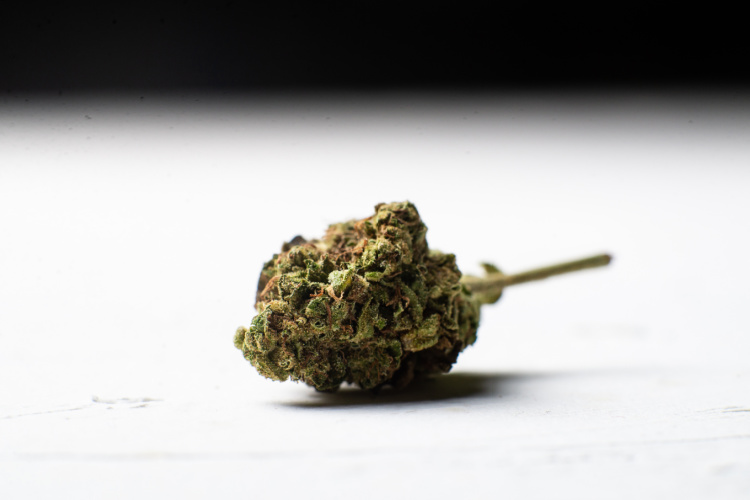 Benefits of Microdosing THC: How to Get Started
Benefits of Microdosing THC: How to Get Started
First things first: If you’re not already in our system, let’s get the process rolling with some brief intake forms for new patients. They’re quick and easy—we promise!—and they’ll help us understand your needs and goals. If you need a temporary medical marijuana card, we can even help. Simply register for an immediate 30-day Visitor Pass ($30 paid to the city) today.
As with any change in your wellness or supplement routine, you should always check with an expert who understands the ins and outs of consumption to see if cannabis microdosing is right for you. One of our qualified Patient Consultants will help you determine if cannabis microdosing is right for you and show you how to start microdosing.
Once you’ve got the professional go-ahead, take a minute to check out some of our favorite high-CBD and low-THC products. Whichever products you choose, the experienced budtenders at our Washington, D.C. dispensary are here to help guide you through your cannabis microdosing journey.
Microdosing THC: Bringing It All Back Home
Why microdose THC? As we’ve covered, there are many reasons! Some people enjoy the relief microdosing can provide for bodily conditions such as relief from chronic pain or inflammation. In contrast, others turn to microdosing for conditions such as insomnia, anxiety, and depression. Either way, a large and growing body of evidence suggests that microdosing THC may impart lasting benefits.
And, if you’re new to the world of cannabis consumption, microdosing can be a great way to learn your own tolerances and discover the right level of THC to suit your individual needs.
If you’re interested in getting started, we’d love to help! As Washington’s #1 family-run medical marijuana dispensary, we’re dedicated to helping you get the very most from your cannabis experience. Have any other questions about microdosing THC (or any other cannabis-related topics)? Just ask!
Cannabis Concentrates: Benefits & Effects
Cannabis concentrates have become some of the most popular items at our dispensary—and it’s no surprise why. Not only can they be aromatic and flavorful but the effects of cannabis concentrates are usually quite potent and hard-hitting, which many customers love.
What Are Cannabis Concentrates?
Concentrates are highly potent cannabis products that produce intense effects and bold flavors. Concentrates are primarily made by collecting the resinous trichomes of the cannabis plant. The benefits of cannabis concentrates are imparted thanks to the large volume of cannabinoids and terpenes gathered from these fresh, crystalline trichomes.
There are a few ways trichomes can be collected. For example, while rosin is made by using heat and pressure to squeeze that resin out, kief is made by simply shaking those trichomes loose with agitation and collecting the fine powdery residue they produce. More on types of concentrates later: Let’s start with the benefits of concentrates.
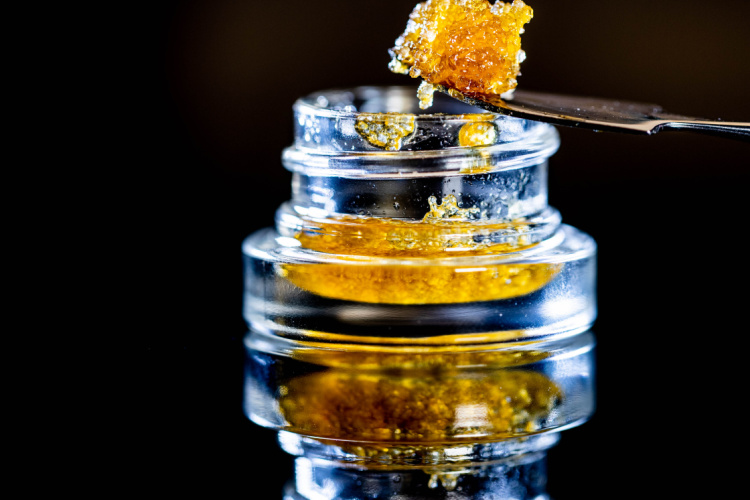 The Benefits and Effects of Cannabis Concentrates
The Benefits and Effects of Cannabis Concentrates
Why use a cannabis concentrate? Most people who enjoy concentrates are looking for a strong and efficiently-delivered cannabis product. If a dab of shatter clocks in at 70% THC but some cannabis flower only possesses 20% THC, that means the one dab would produce over 3 times the effect through the same inhalation of smoke or vapor.
Additionally, thanks to a high terpene content, hits of concentrates can be delightfully flavorful and possibly more therapeutically effective, as a concentrate can contain a higher concentration of terpenes than a small bud of regular cannabis flower can.
While potency is a benefit of concentrates that can be particularly useful for patients who need high doses of THC to manage symptoms, it’s wise to exercise care with concentrates. With high potency also comes a higher chance that you inadvertently consume too much. If you’re new to concentrates start with very small doses and always give your body plenty of time to feel the full effects before consuming more—start low and go slow!
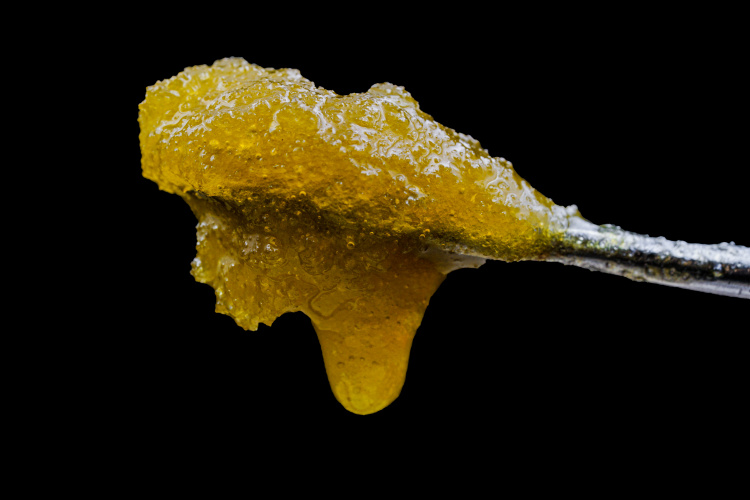 Different Types of Concentrates
Different Types of Concentrates
There are many different types of cannabis concentrates. A concentrate’s type is typically determined by the methodology with which it is made. Because of this, concentrates can vary in form and texture, even though they may contain similar levels of cannabinoids and terpenes. There is no “best cannabis concentrate” because which formulation you prefer can depend on your personal tastes.
Here are some of the many different types of concentrates that you may come across at our dispensary.
Kief: Kief is a powdery collection of cannabis trichomes that have been shaken loose from flower buds. You can even collect kief for bud yourself with a kief catcher. Kief is the least potent concentrate out there, usually clocking in at between 25%–35% THC.
Hash: Hash is the oldest concentrate on earth, having been smoked for many centuries. It’s made by collecting the loose trichomes that make up kief and squeezing them together into a solid block or chunk. Hash can also come in a loose form called ‘bubble hash’ or dry sift hash. Hash is usually more potent than kief but less potent than most other concentrates, typically coming in somewhere between 35%–55% THC.
Shatter: Shatter is a popular concentrate made using a BHO (butane) extraction process. It gets its name from its glass-like form, which is a thin sheet of solidified oil that shatters into many small pieces when handled. Shatter typically has a THC percentage landing between 50% and 80%.
Rosin: Rosin is a sticky and terpene heavy concentrate that packs in a lot of flavor. It’s made using a solventless extraction process and has become a favorite among health-conscious consumers looking for a solvent-free extract that features bold flavors. Rosin usually ranges from 60% to 70% THC.
RSO: RSO, also known as Rick Simpson Oil, is a thick and sticky cannabis oil that is rich in THC and has a reputation for potent medicinal properties. It’s got a syrupy and thick consistency and usually comes in a syringe from where it can be applied sublingually or transferred to other foods and liquids. While RSO is usually high in THC, it can also be CBD-dominant.
Distillate: Distillate is a concentrate made through a complicated distillation process that methodically separates THC from every other compound found in the source plant material. Because this extraction process is so successful at isolating THC, many distillate oils can reach incredible potency levels of roughly 99% THC.
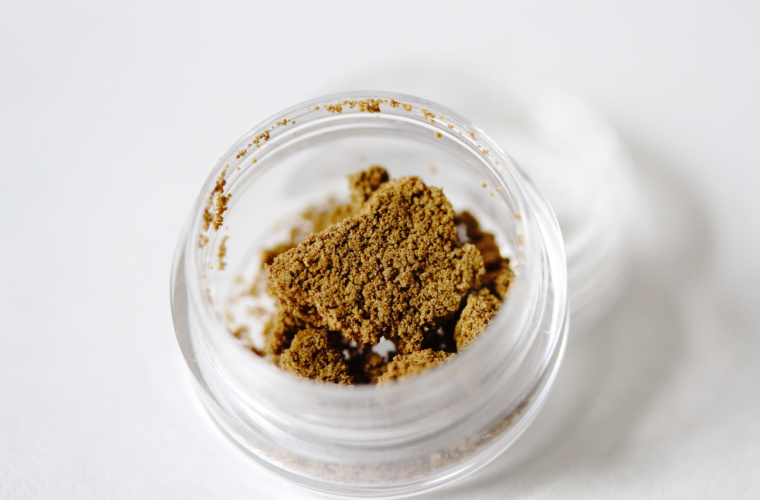 Cannabis Concentrates at Takoma Wellness
Cannabis Concentrates at Takoma Wellness
Ready to experience the potent effects of cannabis concentrates and benefits of cannabis concentrates for yourself? Our budtenders can help you find the cannabis concentrate that suits your individual needs and interests.
Come down to our dispensary today or (if you already have a concentrate type in mind) shop our online menu right now to choose from a wide selection of cannabis concentrates. We look forward to seeing you!
Cooking with Cannabis: A Complete Guide
Have you ever wondered what cooking with cannabis would be like? Crafting your own infused delicacies and looking forward to that extra-rewarding first bite? Luckily, learning how to cook with cannabis isn’t extraordinarily difficult. In this post, we’re going to look at the basics of cannabis cooking and share two important recipes that will enable you to make many different cannabis-infused treats.
Cooking with Cannabis: The Basics
Cooking with cannabis is just like regular cooking. There’s just one difference: THC. While it would be great to just mash some cannabis flower into a brownie and call it a day, that’s unfortunately not an option.
That’s because cannabis flower doesn’t actually contain THC. Instead, the plant develops THCA. This chemical precursor turns into THC when exposed to heat through a process called decarboxylation. That usually happens when you spark up some flower for a puff. However, since there’s no flame involved with edibles, you’ll need a “decarb” workaround.
How to Decarboxylate Cannabis Flower
The term “decarboxylation” may look scary on paper. But its bark is worse than its bite.
All you need to do to decarb cannabis is heat-activate it. That’s a two-step process. First, grind your cannabis with an herb grinder. Then, put it on a cookie sheet covered in wax paper. Bake it at 245 Fahrenheit for about 30 minutes. Mix it every 10 minutes to make sure it cooks properly. When all your cannabis is a light golden brown, you’re ready to rock.
Cannabis Cooking: Two Important Recipes and Tips
Now that we have the basics of cannabis cooking under our belts, we can get down to the fun business: recipes. THC is a highly lipid-soluble molecule. In other words, it binds readily to fats. Butter and oil both contain tons of fats. These are the foundational ingredients for any cannabis-infused product.
Having a recipe on hand for both cannabutter and infused coconut oil will give you two solid options for a versatile cannabis ingredient with which to infuse recipes. Armed with cannabutter or cannaoil, you can start baking or cooking with cannabis using any normal recipe that calls for butter or oil.
Before you begin: Always label your infused products clearly, so no one accidentally uses a cannabis product. Keep out of the reach of children. Store cannabutter or canna oil in the fridge or freezer.
How to Cook with Cannabis: Cannabutter
Cannabutter is a classic medium for carrying THC. Countless recipes use normal butter, which you can substitute with cannabutter super easily. Here’s how to make it.
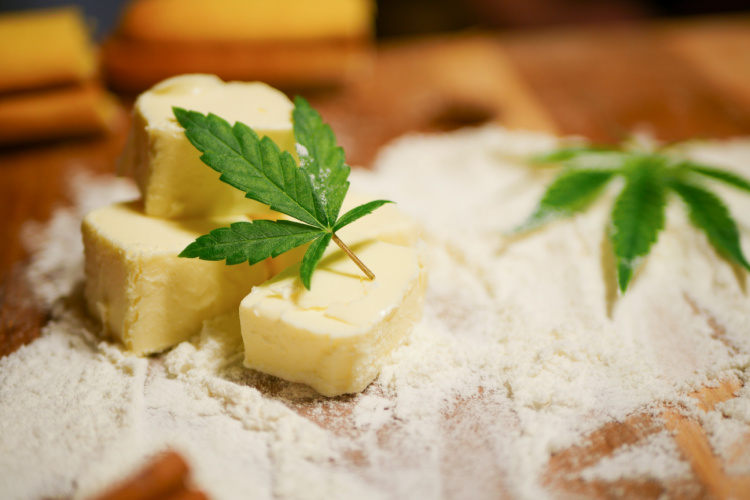
Ingredients:
- 7 grams decarboxylated flower
- 1 cup butter
- 1 cup water
Instructions for Making Cannabutter:
First, decarb your flower as outlined above. Once your flower is decarbed, you can begin the cannabutter-making process.
Combine butter and water in a saucepan on a low heat. Once the butter has begun melting, add your decarbed flower. Keep simmering at a low heat (about 170 Fahrenheit or so) for between 2 and 3 hours. Never let it boil fully!
Finally, let the butter cool slightly (but make sure it's still in liquid form) and strain the cannabutter into a jar through a cheesecloth. Refrigerate until solid, then seal with a lid. If any water separates during solidification, you can discard that excess water.
How to Cook with Cannabis: Infused Coconut Oil
Sometimes, you don’t want to cook with butter. In that case, coconut oil makes a great substitute that readily absorbs THC and tastes great. Check out this recipe.
Ingredients:
- 7 grams decarboxylated flower
- 1 cup coconut oil
Instructions:
Place both the coconut oil and the flower into a high heat-rated Mason jar or similar (Find out how to assess your jar for safety.) Place the jar into a pot. Fill the pot with enough water until the water line is above the oil/flower mixture. Important: Start with room temperature water (not cold, as that could cause the glass to break), bringing it to a boil slowly.
Both the jar and the pot should remain uncovered for ventilation. Keep on a medium boil for 2 hours, monitoring closely. Keep an eye on the water level, since some of it will boil off. Add more water, as needed, to maintain the original water level in the pot.
Lastly, let the oil cool slightly (it still needs to be in liquid form but you don’t want it steaming hot), then strain the canna oil into another jar through a cheesecloth. Once cool, seal with a lid.
Cooking with Cannabis: Wrapping Up
Now that you know how to cook with cannabis, you need to start working on your own recipes! First things first, though. You’re going to need to stock up on some flower of your own. That’s where we come in. Check out our full selection of flower or come visit our dispensary to get cooking. We look forward to serving you!
What Are Cannabis Edibles, How Long Do They Last?
If you’re returning to the world of cannabis after many years, you’ve probably noticed that much has changed. In addition to entirely new classes of products such as vaporizers, concentrates, and topicals, the world of cannabis-infused edibles has been turned into a confectionary powerhouse.
If you grew up thinking “cannabis edibles” meant inconsistent (and often dry) marijuana brownies, you’re in for a surprise: From infused honey to mouth watering chocolates to chewable lozenges and discreet capsules, there’s a wide and truly impressive variety of cannabis-infused edibles on the market. If you’re curious about edibles but haven’t known where to begin, you’re in the right place. This post will answer such important questions about ingestible cannabis, such as:
- What are cannabis edibles?
- How long does it take cannabis infused edibles to work?
- How long do cannabis edibles last?
- What’s the right dosage of cannabis edibles?
Are you ready? Let’s dive in.
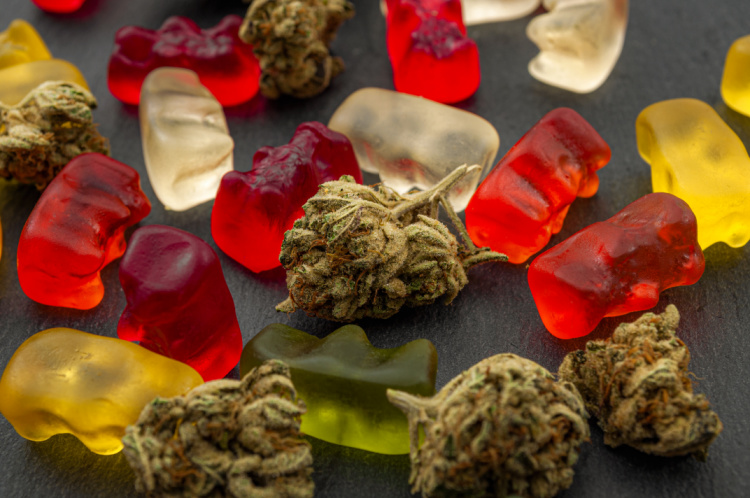 What are Cannabis Infused Edibles?
What are Cannabis Infused Edibles?
At the most basic level, a cannabis edible is a food or beverage infused with cannabis or its major active ingredients, natural compounds called cannabinoids. The two most prevalent cannabinoids are THC and CBD. THC is the cannabinoid most directly responsible for cannabis’ distinctive “high.” By comparison, CBD imparts—at most—a gentle cerebral “buzz.” That’s why CBD on its own is legal in all 50 states and the District of Columbia. In addition to their subjective effects, both THC and CBD deliver a wide range of medical potential, from reducing several types of pain to helping treat certain seizures to reducing anxiety and stress.
In part because cannabis itself can be processed into so many forms—from fresh, fragrant flower to the aforementioned concentrates and tinctures—there’s practically no limit to the number and types of foods and beverages that can be transformed into cannabis infused edibles. But while many of them take the form of familiar (and delicious!) infused chocolates, cereal treats, and other sweet snacks, others take a more straightforward approach.
A capsule may not seem the likeliest format in which to take cannabis, but that’s an increasingly preferred choice for many people. Especially popular with those new to cannabis medicine, capsules offer a portable, shelf-stable, and discreet way to access a consistent and precise dose of cannabis. Needless to say, this is especially useful when the goal is to address chronic symptoms and conditions such as pain, anxiety, and the side-effects of chemotherapy.
One of the most popular forms of cannabis infused edible is the lozenge or troche (pronounced “trow-kee”). Smaller and more shelf-stable than infused cookies or chocolate bars, they provide a carefully measured dose of cannabis medicine along with a burst of juicy flavor.
For all the variety and choices offered by cannabis edibles, though, it’s important to understand the ways they function in our bodies in comparison to inhaled cannabis. That’s a great excuse to dive into our next topics: “How long do cannabis edibles take to start working?” and “How long do cannabis edibles last?”
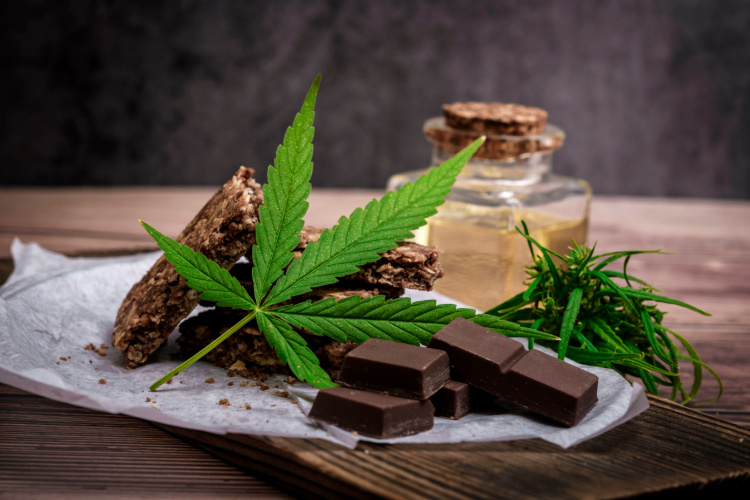 How Long Do Cannabis Edibles Take to Start Working?
How Long Do Cannabis Edibles Take to Start Working?
When we ingest cannabis by smoking it or inhaling it through a vaporizer, we feel its effects quickly, typically within about ten minutes. That’s because the cannabinoids are rapidly absorbed through the lungs.
With edibles, by comparison, the cannabinoids are processed by the liver. Among other things, this means that it takes much longer for the cannabis to take effect. Apart from such factors as an individual’s age, weight, metabolism, and recent food intake, you can typically expect an edible to take between 45 minutes and 2 hours to begin taking effect.
Perhaps the most common issue around cannabis edibles is that inexperienced users—believing the product simply “didn’t work”—will take more. But when the double dose of edibles finally kicks in, the effect can be much stronger than anticipated.
That is why we always counsel our clients to “start low, go slow.” Knowing that it may take up to 2 hours for an edible to take effect, you’ll be better prepared for a predictable, positive, and fruitful experience.
How Long Do Cannabis Edibles Last?
Just as cannabis infused edibles take longer to reach their full effect, they also last much longer in our bodies. Whereas you can expect the effects of smoked or vaped cannabis to last from around 1 to 3 hours, the effects of edibles often last from 5 to 8 hours—and in some cases, up to 24 hours.
That’s a wide range, and again, several factors influence its duration. As we mentioned earlier, THC is the cannabinoid most directly responsible for the cannabis plant’s distinctive “high.” If you’re concerned about excess psychoactivity, we recommend you try a cannabis edible with either a balanced THC:CBD ratio, or one that contains very little THC. Especially if you’re new to edibles, this is a good way to mitigate effects that might otherwise feel slightly overwhelming.
With that in mind, we’ll share some dosing guidelines.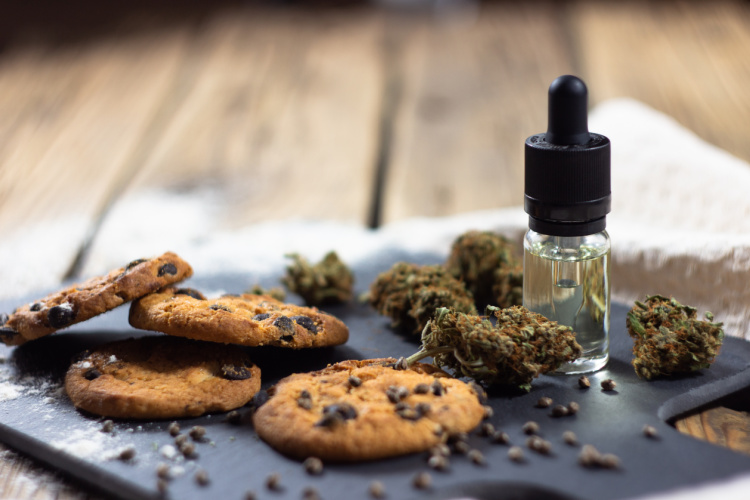
What’s the Right Dosage of Cannabis Edibles?
Every package of cannabis infused edibles we sell is labeled with the precise dosage of THC in each individual unit, denoted in milligrams (mg). Here’s what you can expect in terms of subjective effects.
THC Dosage of 1 mg to 2.5 mg
Expected Effects: Mild relief of symptoms including pain, stress, and anxiety; heightened focus and creativity.
Recommended for: First-time consumers, or more experienced consumers looking to microdose cannabis.
THC Dosage of 2.5 mg to 15 mg
Expected Effects: Stronger symptomatic relief; euphoria; slightly impaired coordination and perception.
Recommended for: Stubborn symptoms not affected by smaller doses; treatment for insomnia.
THC Dosage of 30 mg to 50 mg
Expected Effects: Strong euphoria; significantly impaired coordination and perception.
Recommended for: Those consumers with a high tolerance for THC, or those whose GI systems don’t tend to absorb cannabinoids effectively.
THC Dosage of 50 mg to 100 mg
Expected Effects: Seriously impaired coordination and perception; possible unpleasant side effects including nausea and increased heart rate.
Recommended for: Experienced, high-tolerance THC consumers; patients living with inflammatory disorders, cancer, and other serious conditions.
Cannabis Infused Edibles: Other Considerations
These guidelines provide a useful starting point, but because everyone’s individual physiology is unique, you may respond a bit differently. Again, that’s why we urge you to “start slow, go low.” Begin with a low dose, and remember to wait at least 2 hours before taking any more.
If at any point the effects of cannabis feel too strong, don’t panic. Though the sensations—which could include nausea, paranoia, or a racing heart rate—may feel unpleasant, they’re rarely dangerous. Try watching a show, snuggling with your animal, or stepping outside for some fresh air and to take a gander at a nearby tree. That said: If you suffer from pre-existing heart conditions or other serious medical issues, please consult with a cannabis-informed physician before trying infused edibles.
What Are Cannabis Edibles: Wrapping Up
As the District’s first and longest-running medical cannabis dispensary, we’re grateful that so many Washingtonians turn to Takoma Wellness Center. Check out our edibles via our online menu or stop by. If you have any further questions about cannabis edibles, don’t hesitate to reach out. We’re here to help!



